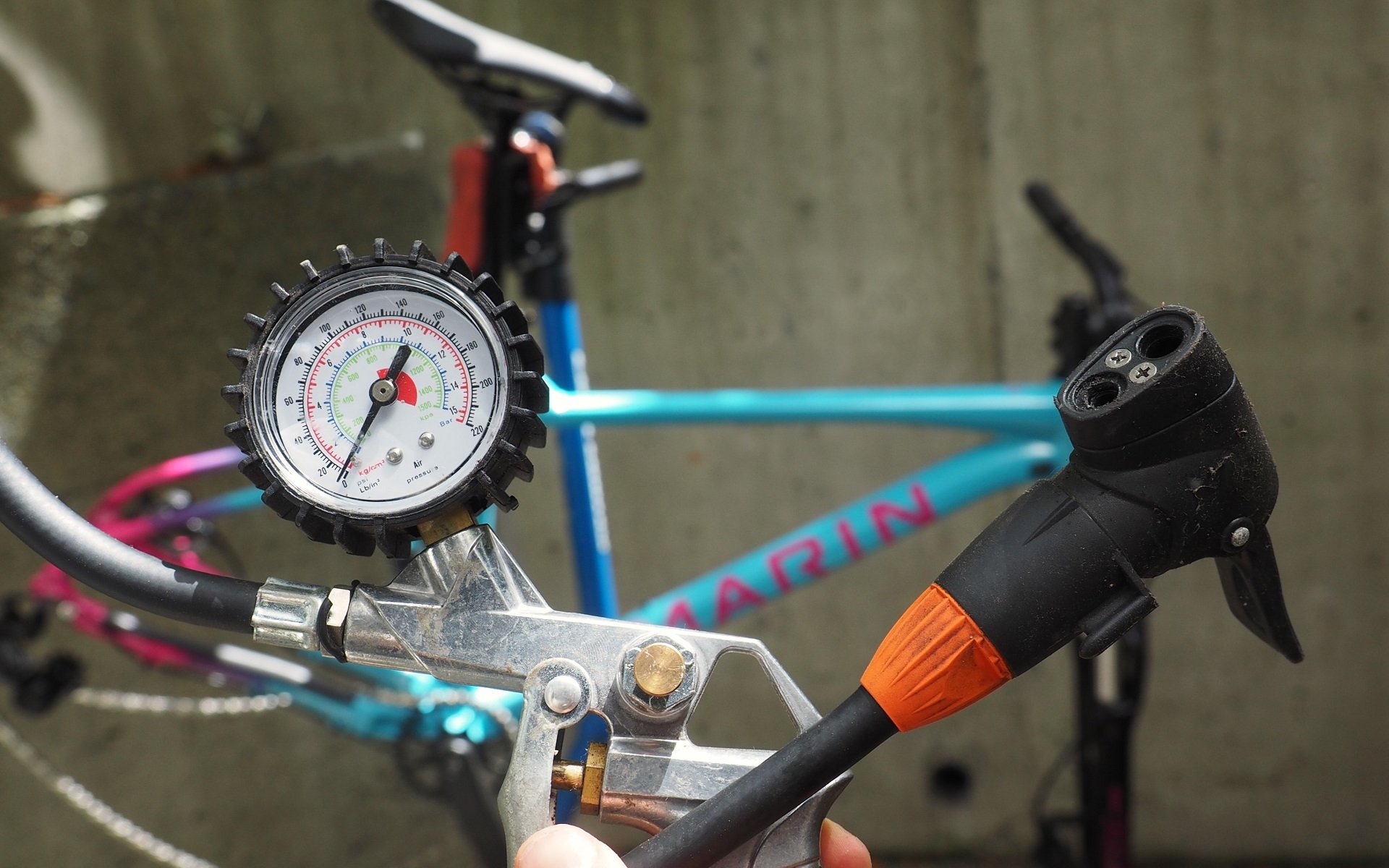
EDITORIAL
Budget Bicycle Buying: Before You Leave The Bike Shop
House Bleeping
I believe that your best experience of buying and owning a mountain bicycle, and the best value for the vast majority of riders, is going to come through a good local bike shop. This is in contrast to buying your bike from a direct-to-consumer brand, even when there are clear justifications in the spec. to dollar ratio. Or buying your bike online from a major manufacturer who's indentured their existing independent dealer network into servicing you, as though you bought the bike from them. That's my opinion and my reasons are multi-faceted from the fitment and buying advice on day dot, through to any support needs that could arise down the trail. It's mountain biking, stuff fails. Also, I think the fact that local businesses pay local taxes and support local trails should matter.
I know there are great service-primary shops. Some great friends of mine own, or have owned, such businesses. I know that there is enough diversity in the direct-to brands that it's not necessarily fair to lump them all together. Turning wrenches, I've seen the worst of what some of these brands deliver in terms of after sale support, warranty, and general product support when it comes to spares but I haven't seen everything. This is simply my experience compared to other brands I've worked with.
Today I'd like to focus on budget mountain bike buying, a category where I think buying a bike locally most consistently benefits the target customer. I'm talking about real mountain bikes, for having fun riding on at least blue-level trails with the experience and skill set of a newer rider. Both the riding experience and skill set, and also the mechanical experience and skill set. This is not me buying a budget mountain bike, raiding all my friends' take-off parts for beer-priced upgrades, and then taking the thing down to a frame to maximize the performance using my collection of tools and experience. This is your mom's friend's neighbour's grandparent's dogwalker's kid's teacher's brother who's decided to take up mountain biking.
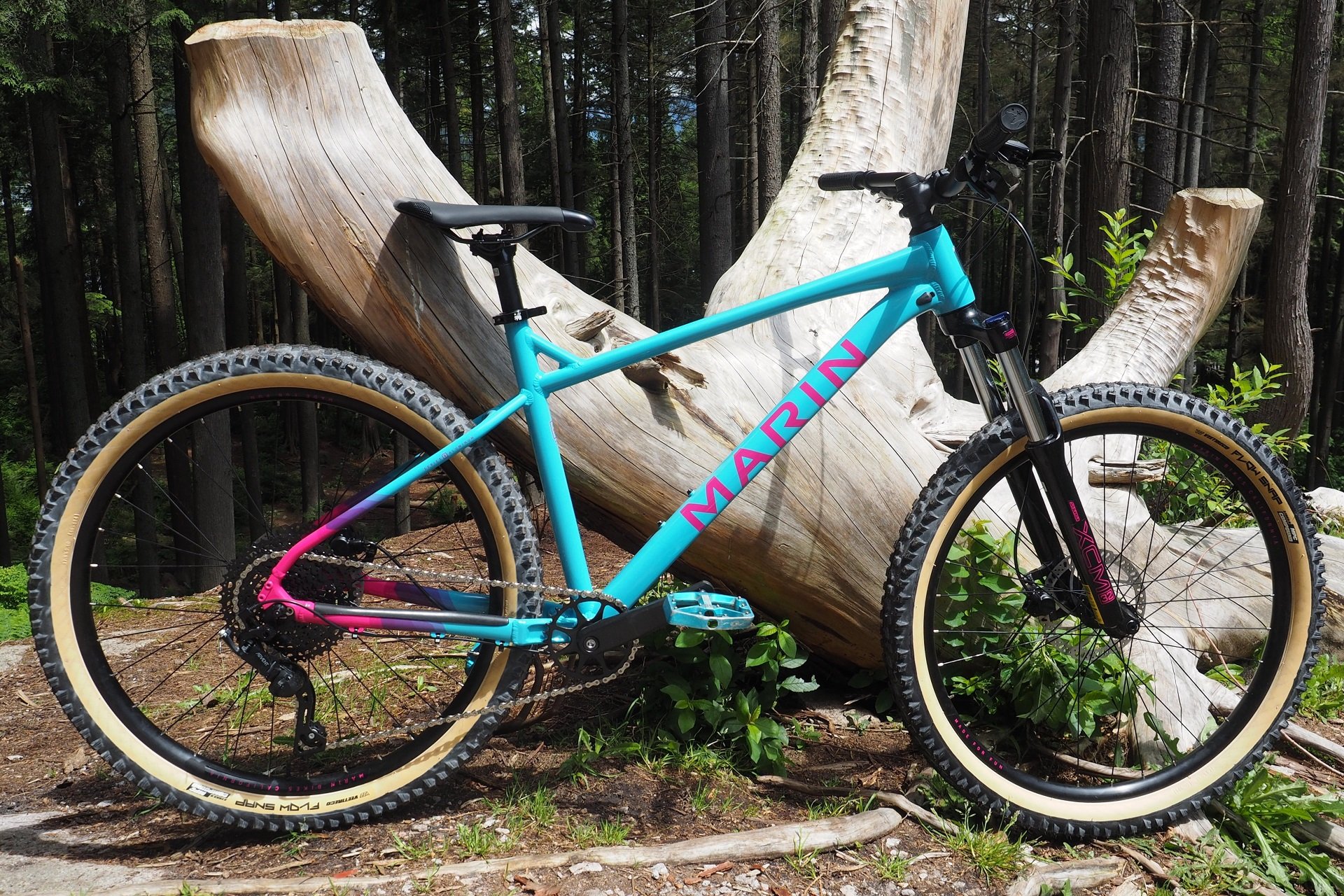
At the stage I'm at with healing my Achilles, I've only had the Marin San Quentin 1 out for some very tame XC rides so far. It's playful with dual 27" wheels and good geometry. It sells for 1350 CAD | 1100 USD. I'll note gleefully that this is a couple bills less than my buddy just paid for just his MY23 Lyrik Ultimate fork.
I am not trying to be an arbiter of what makes a good or bad bicycle shop. I've worked at and with enough consistently good bike shops, or shops that have consistently good people, over the last twenty years that I feel comfortable having the conversation. And I'll catch myself there and say I often find myself in the position of needing to recommend folks go to one shop or another and when I do I always attach a name or two to my recommendation. Cycling, mountain biking or otherwise, is about personal connections - with nature, your machine, yourself - so buy a bike from someone you're comfortable talking to. What I will say definitively is that there are a lot of independent bicycle dealers in my geographic area* and they offer a lot of experiences. I think, here, regardless of how much money you spend or plan to spend, it's good to have a bike shop you're comfortable and confident in and I don't think it'll take that many tries to find one if you don't currently have a go-to.
*Many locales have significantly fewer options, but I'd argue that makes it even more important to support your local.
I'm writing this piece after some feedback I received, directly and indirectly, from my piece 'Real' Mountain Bikes Don't Come With Pedals. I'm going to suggest some talking points for regular folks buying an entry level mountain bike. I'm going to suggest some stuff that I think should be the basic best practices when buying one of these mountain bikes. I'm not trying to be a dick here but, as with my pedal piece, if you work in, or own, a shop and you think this sounds like idealistic fantasyland bullshit then the problem might be you. Lastly, thanks to my shop friends who entertained my diatribes and helped me know when I wasn't out in left field. In particular, the Squidulous Toucan for being my imaginary floor-staffer as I mock-negotiated my way through this process.
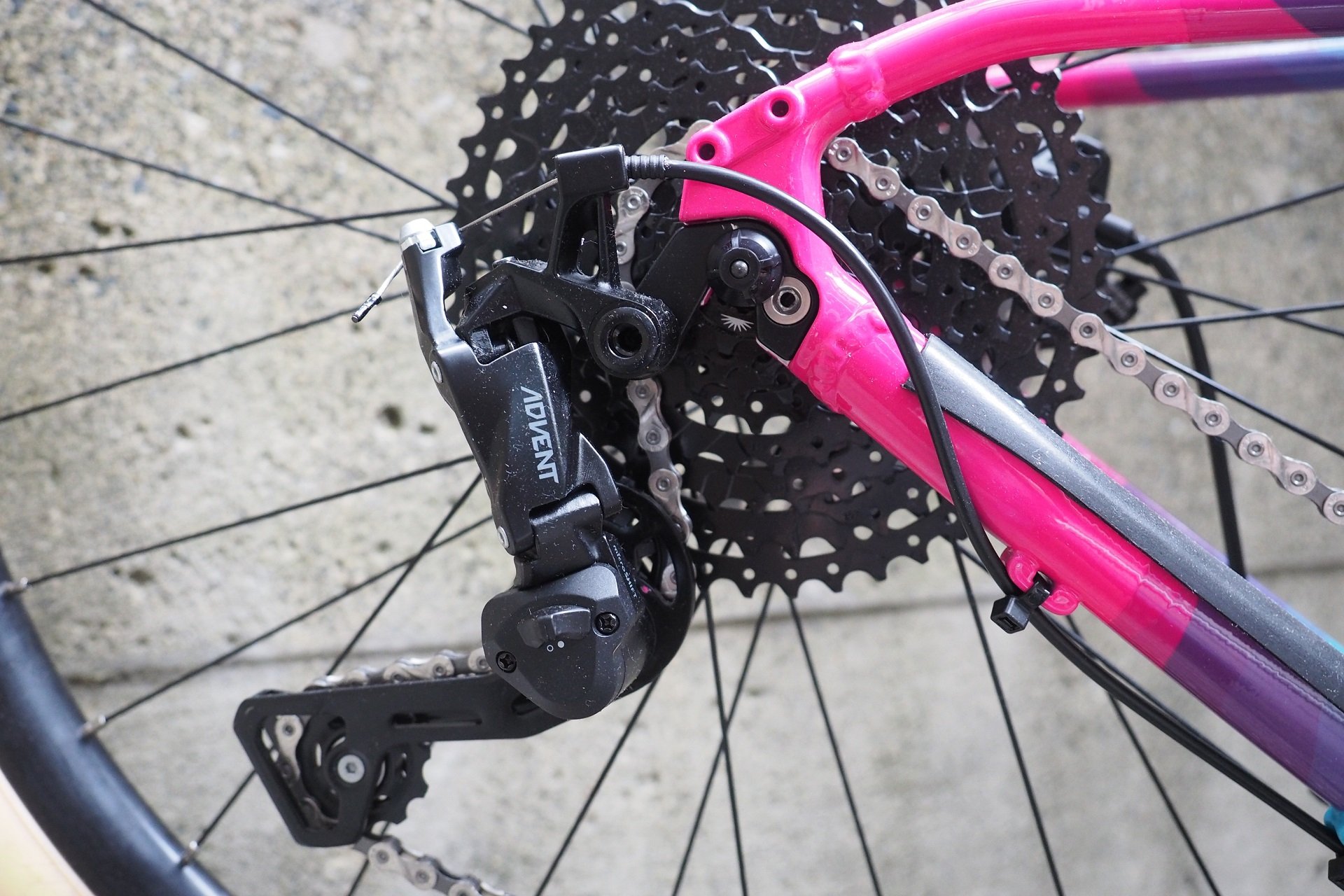
If I was Shimano I'd be pumping resources into making a clutched version of the Alivio M4000 drivetrain. I'm sure semi-wireless XTR shifting is going to be amazing, but bomber 9-speed all-steel cassettes and the corresponding clutched derailleurs are going to be a difference maker to significantly more riders.
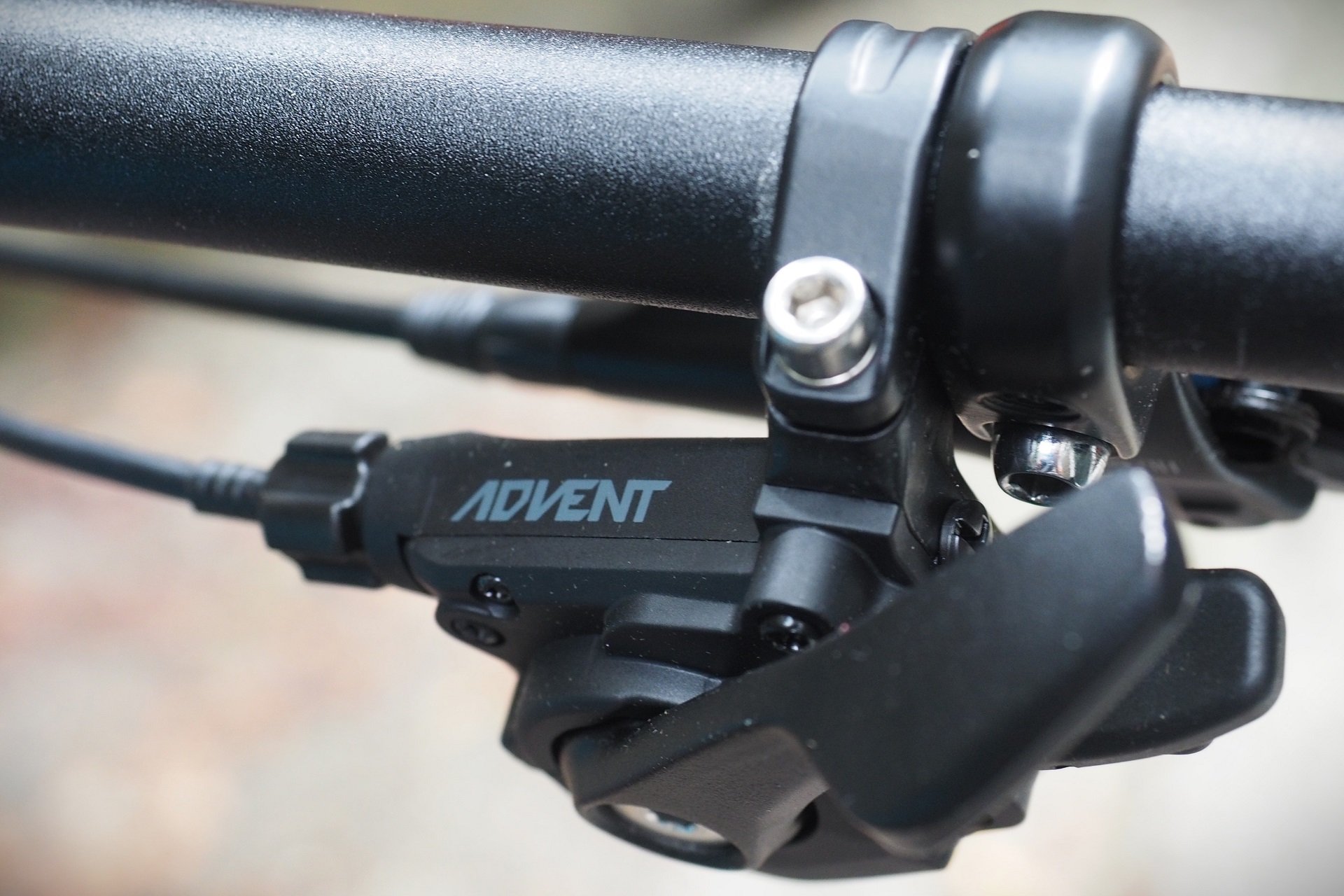
The speed an quality of gear changes with MicroShift's Advent system is not a true comparable to Shimano's 11-speed and 12-speed Deore drivetrain systems. But, as a much lower priced alternative I think it's growing dominance is well deserved. ShiRAMano don't really make a competing product.
Setting A Budget
It's always easy to say "for a few more bucks..." but as with my parked budget hardtail review plans, I have to draw the line somewhere. When a rider needs gear, shoes, pads, helmet, gloves, hydration, and basic tools add up fast. The problem is that the price of bicycles has been going up but companies are still trying to find ways to hit certain price points while delivering basic expectations. Put another way, if the price of a certain model didn't go up then the spec went down. I'll talk more about this in a section below but for now, suffice to say there is some absolute sh*t coming on bikes, particularly in the world of hydraulic brakes, and that's why in some of my bullet points I've listed brand names.
Certainly the first step in deciding on a budget is determining the minimum level of mountain bicycle that we're buying. I have a specific buyer in mind today, which is my youngest brother who, despite my best efforts, isn't particularly interested in mountain biking. On the new development front, his six year old is very interested in mountain biking (this may be partially my child's fault). My brother needs a mountain bike that's great for the blue trails at his local mountain now, but also something that will grow with their experience and is upgradeable into the future. In light of the requirements, the budget is going to be somewhere between 1000-2000 CAD. Realistically closer to 1500 CAD as a starting point in 2022. Here are my requirements:
- Hardtail frame with modern geometry (good geometry is free you '90s NORBA-geo selling bastards)
- Through-axle fork stiff enough for a 200lb rider on blue trails (performance wise, any fork on a bike in this price range will be a future upgrade discussion)
- Hydraulic disc brakes from a reputable manufacturer (look for Shimano or Tektro brakes in this price range)
- Clutch-equipped derailleur drivetrain (MicroShift, Shimano, or BOX. Avoid SRAM SX like the plague, you're unlikely to see NX under 2K CAD). I'm suspicious of anything with a front derailleur.
- Double-walled aluminum rims and a cassette rear hub (not a freewheel; shocked I have to say this)
- Knobby tires that deliver good climbing and braking in all conditions on blue trails
- A saddle with no sharp protruding pieces of plastic (it would be good if it was comfortable but at the minimum it shouldn't maim)
- A seat post quick release that can be opened and closed multiple times without failing and hold the seat straight
These are all terms and concepts that it would be good to familiarize yourself with. I'm certain your friend, or friend-of-a-friend, who knows about bikes will be happy to get you up to speed on the basics and so will the floor staff at any shop worth buying a bike from.
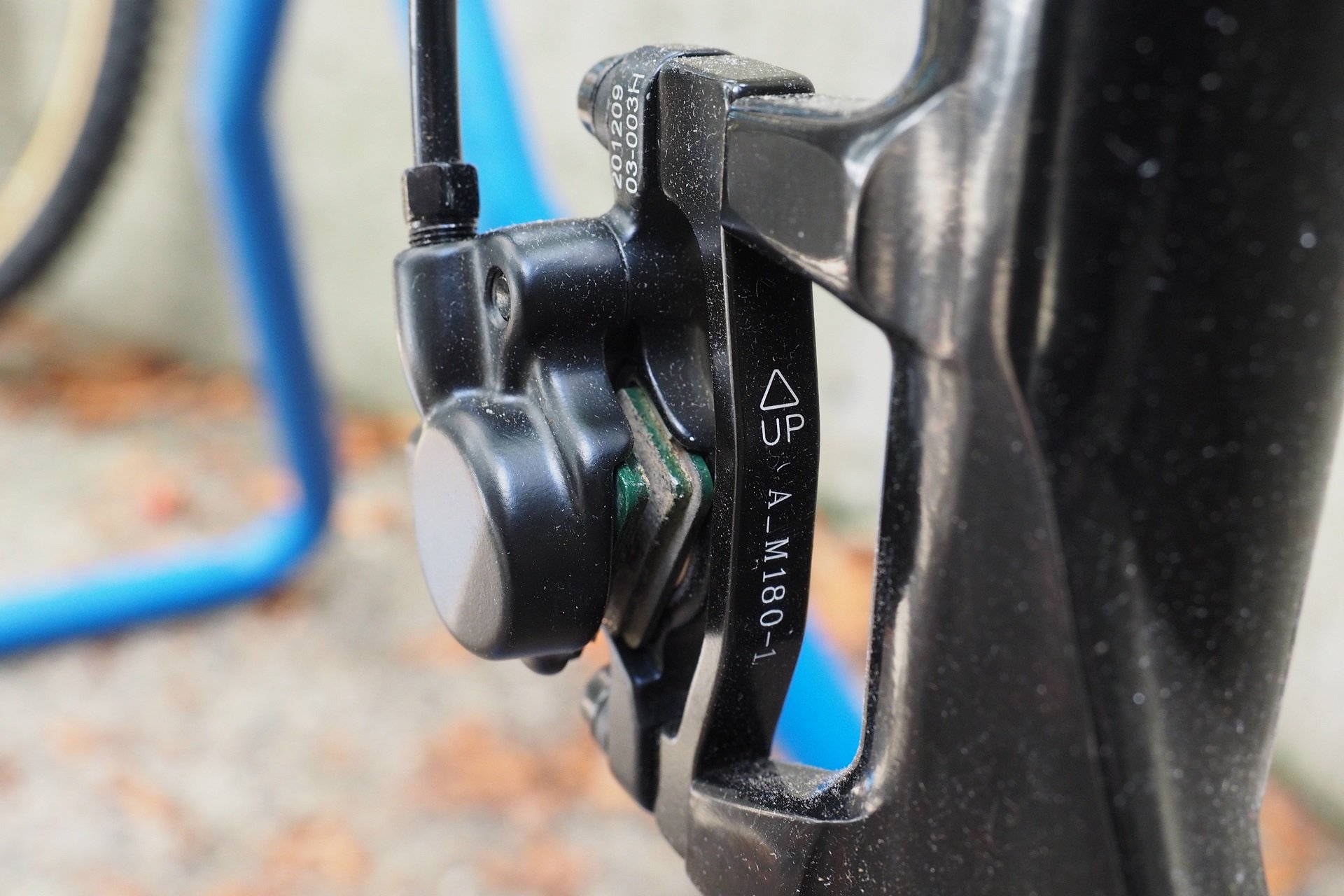
All brakes on a sub-2K bike are going to come with resin, sometimes called 'organic,' brake pads. Switching to sintered pads, sometimes called 'metallic,' can be a great upgrade when you burn through the first set.
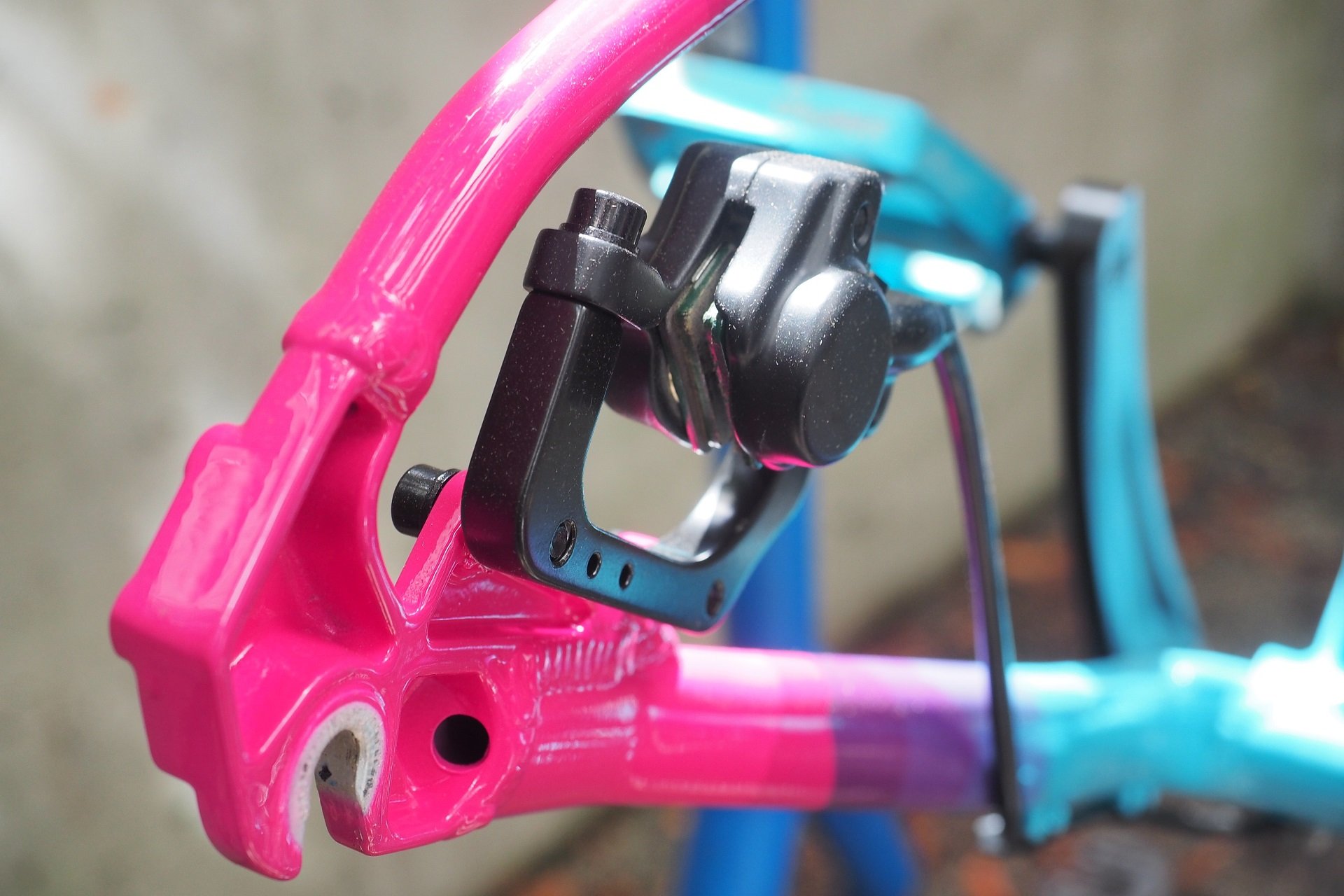
I love IS (International Standard) mounts, and especially on budget bicycle frames. The brake adapters can be easily modified if alignment is slightly out and the threads are in the cheap-to-replace adapter, instead of being part of the frame, for folks that are learning to work on their own bikes.
Rotor Rousing
Shimano brakes in this price range will almost always be mated to 'Resin Only' rotors. This means the rotors only work with resin (not-sintered metal) brake pads but more importantly - because for many riders resin pads work fine - the rotors also suck for braking in a such a way that swapping them without making any other changes (bleeding brakes, changing pads) is an immediately noticeable upgrade.
Uncle Dave and I have a standing annual competition to see who can mention how badly these rotors suck more times. It always comes out as a draw because frankly, we all win when more riders know about it. Some day Shimano is going to quietly kill off these cheap steel, money-saving, shit-discs (they suck on commuter bikes too, especially in wet conditions) and we're going to get a nice bottle of something and toast our successes. In the meantime, if the rotors are stamped with the words "Resin" and "Only" then buyer beware because it's an expensive, but I'd argue necessary, early upgrade.
The short version of this is to say that Shimano makes fantastic budget brakes, but I usually look for Tektro spec on budget bikes as I can then generally be certain they'll be mated to decent 6-bolt rotors and not only will that mean more stopping power upfront, it means I can go with a higher-friction sintered pad option when I'm due for a replacement set.
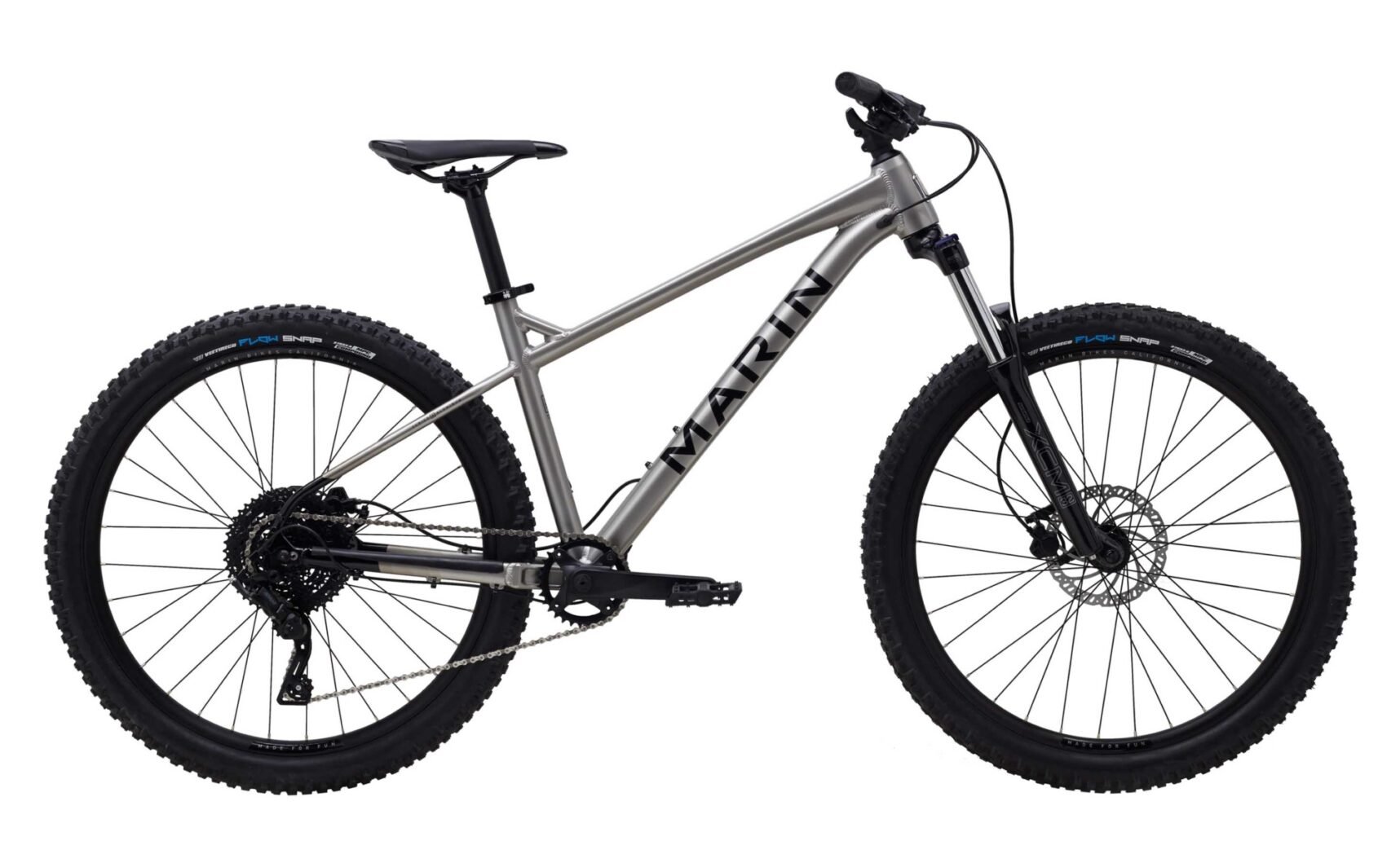
Setting a budget is hard when we're talking about entry level mountain bikes. A few hundred bucks can make a massive difference to the on trail experience. To illustrate this, I'm using the Marin San Quentin 1 in this piece (this is the alternate colourway that Marin uses). This model sells for 1350 CAD.
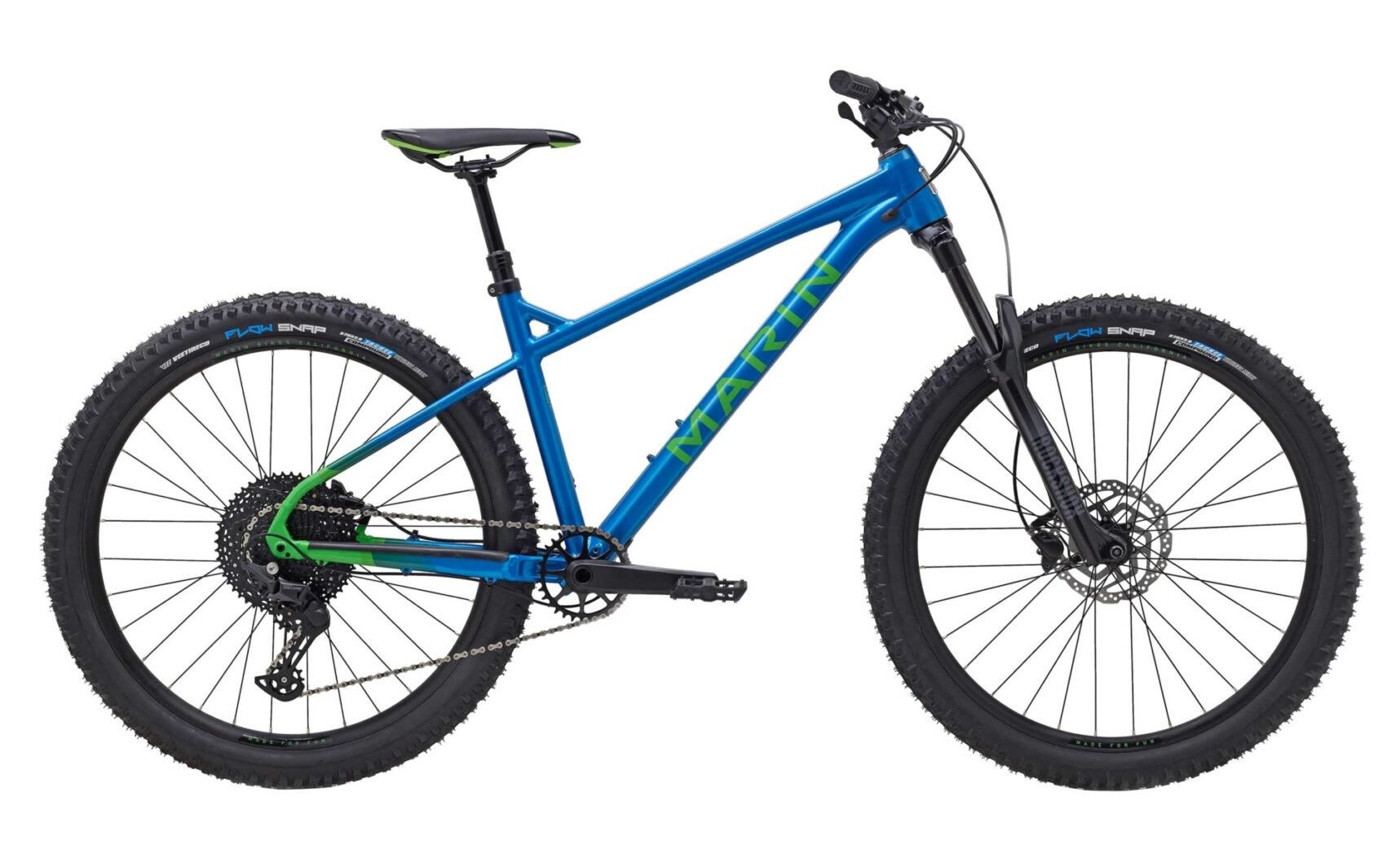
The San Quentin 2 gets upgrades like a Deore 11-speed drivetrain, a basic TranzX dropper post, and a thru-axle rear end. But what a rider is really going to notice over the SQ1 on a test ride is the RockShox Recon suspension fork. Long term my favourite upgrade the SQ2 buyer is getting is the external bottom bracket crankset. This model sells for 1950 CAD. That's 600 CAD or almost a 45% increase.
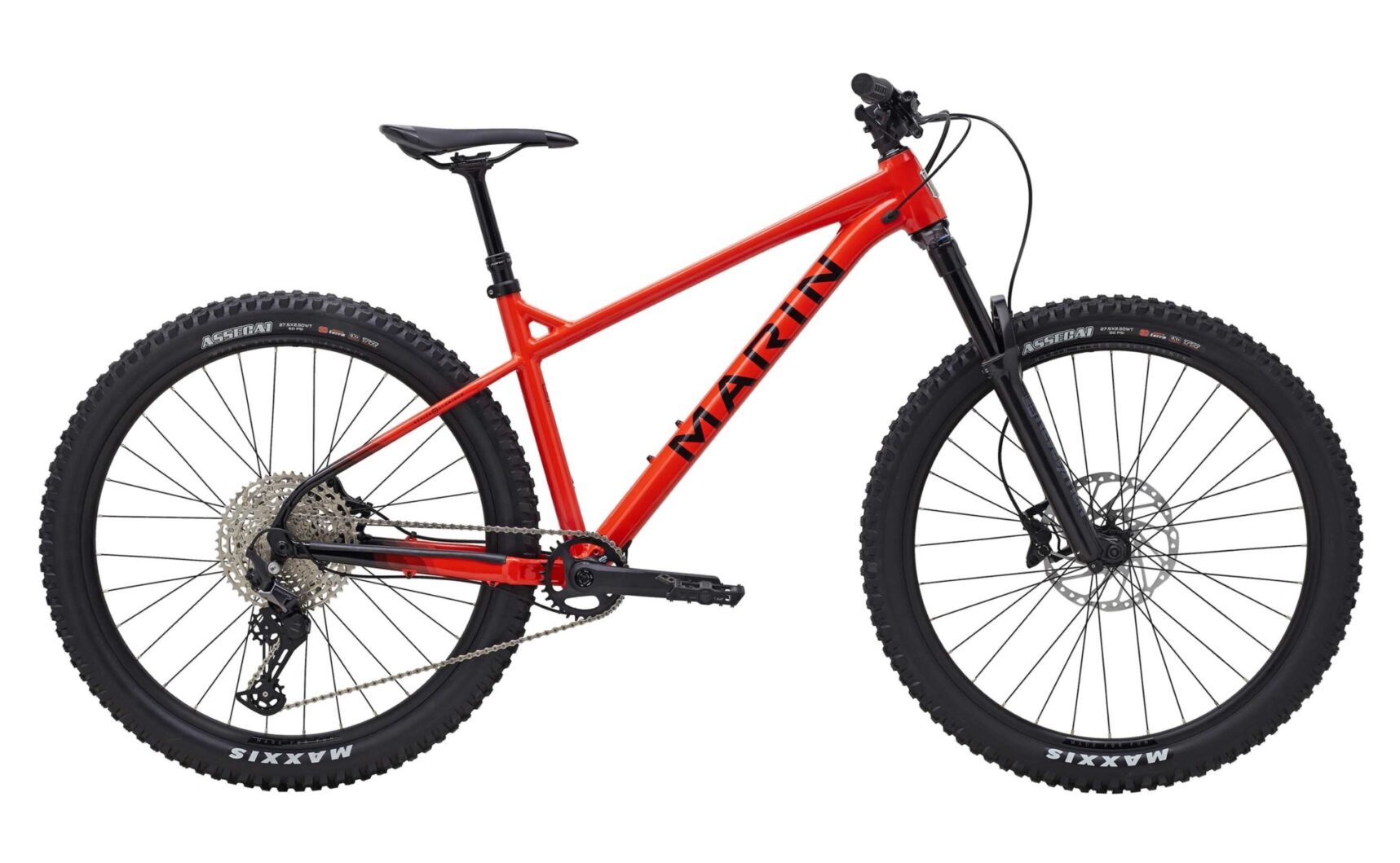
The San Quentin 3 gets Maxxis Assegai tires, a Deore 12-speed drivetrain, 4-piston Shimano brakes, a RockShox Revelation fork, and an X-Fusion dropper post. It's a no compromise, solid value, 27" wheeled hardtail experience that sells for 2900 CAD. That's 950 CAD or 49% over the SQ2. That's $1550 or 115% up from the SQ1.
The Test Ride
What can you tell from a parking lot test? Admittedly you'll learn more about the shop you're buying a bike from than about the bike itself. First off, what level of pre-ride prep did they do? Some shops have a process for every mountain bike test ride that goes out the door whether it's 1K+ or 10K+; if there's air suspension they'll do a basic setup for your weight, they'll run you through anything specific about the bike. They may adjust the controls inboard to simulate a narrower bar, and they will set the saddle height. Some other shops only take that level of care with their premium bikes.
In the latter case, that may be awesome for your friend who referred you, who's buying a new carbon super bike every few years. This may be the best bike shop around for that rider, full of staff helping them get the most out of their off-road experience. But, you're buying a budget mountain bike, making a still significant 1-2K investment in an activity you're excited about, and if you do fall in love with riding you are going to break, wear out, and outgrow parts on that budget hardtail. Eventually you're going to flip that bike or relegate it to commuter duty and invest even more money in your next rig, but what about the honeymoon phase? If the shop doesn't have time for you when you're spending 1-2K, how much effort are they going to put into helping with reasonable upgrades and necessary repairs?
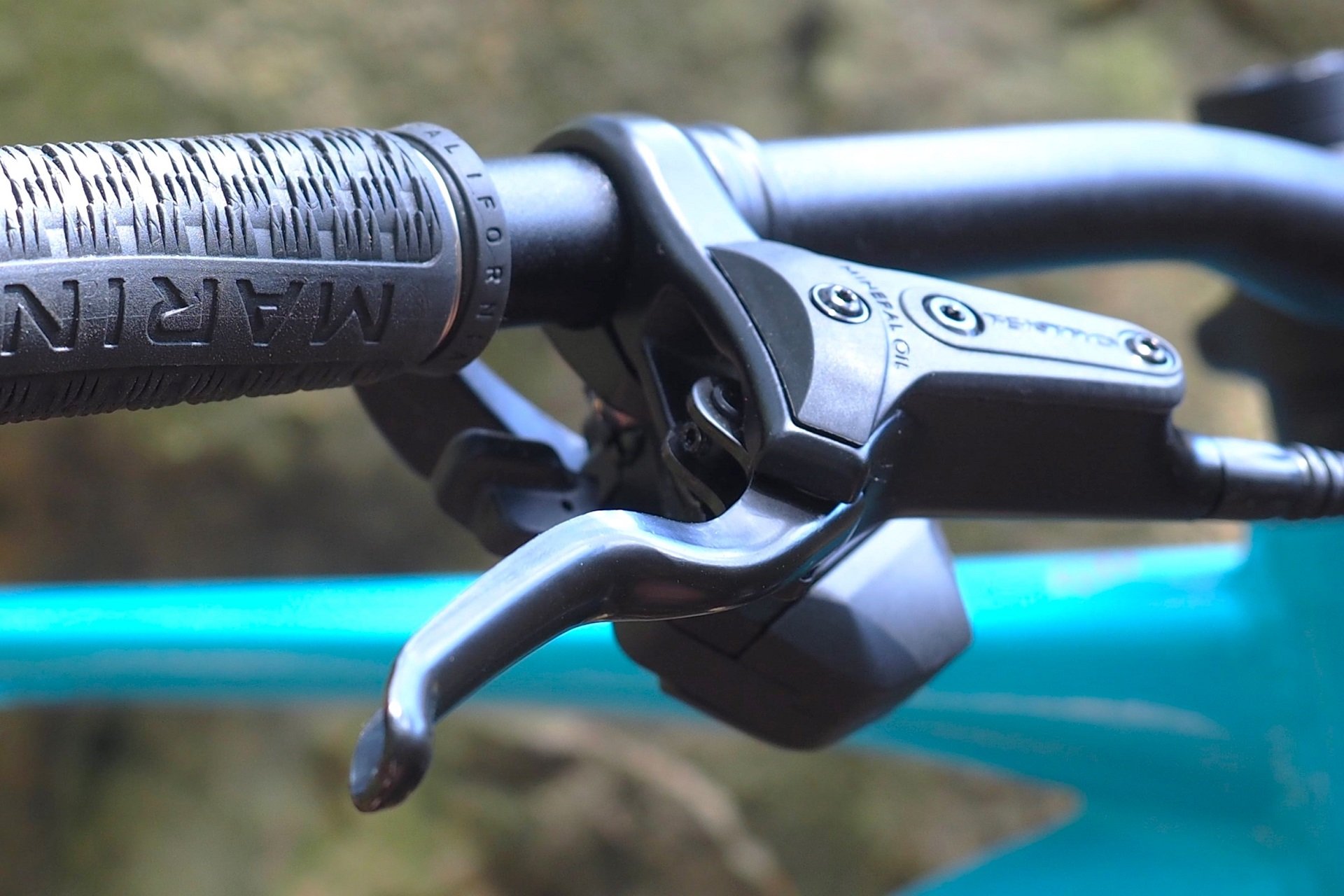
Pet Peeve: It is so quick to adjust lever reach for smaller hands (set-screw) and to adjust lever position (inboard v. outboard) but wrenching on bikes I regularly see riders with small, or tiny, hands with brakes too far out for me (size M/L glove) to use comfortably and too close to the grip to use with one, or even two, fingers. That's bikes that left the shop, but I think it matters for test rides too.
There are three things I'd expect before taking any bike out for a test ride. The bike gets checked over by a mechanic before you roll it out the door. People touch bikes on the floor all the time, or they get moved around in storage and folks browsing fiddle with them. A shop that cares about your experience will make sure the bolts are tight, the brakes are working properly, and the shifting is crisp before sending you out
Shops will also install real trail riding pedals on the bike before you take it out. These will be plastic or metal with metal pins. If you need a bike that has high-traction off-road worthy tires then you need a bike that has high-traction off-road worthy pedals. If they send you out with cheap pin-less plastic flats, they either think they're selling you the wrong bike (did they suggest a city/commuter type bike instead?) or they aren't taking your experience seriously. Off-road worthy tires, off-road worthy pedals.
Finally, the shop staffer helping you will adjust the saddle tilt, brake lever reach, and position of the controls to suit you. This will either be to your preference or to where they think your preference will be. Often these items will be adjusted again based on your feedback. For smaller riders, shops will often move the grips and controls inboard to simulate a narrower handlebar.
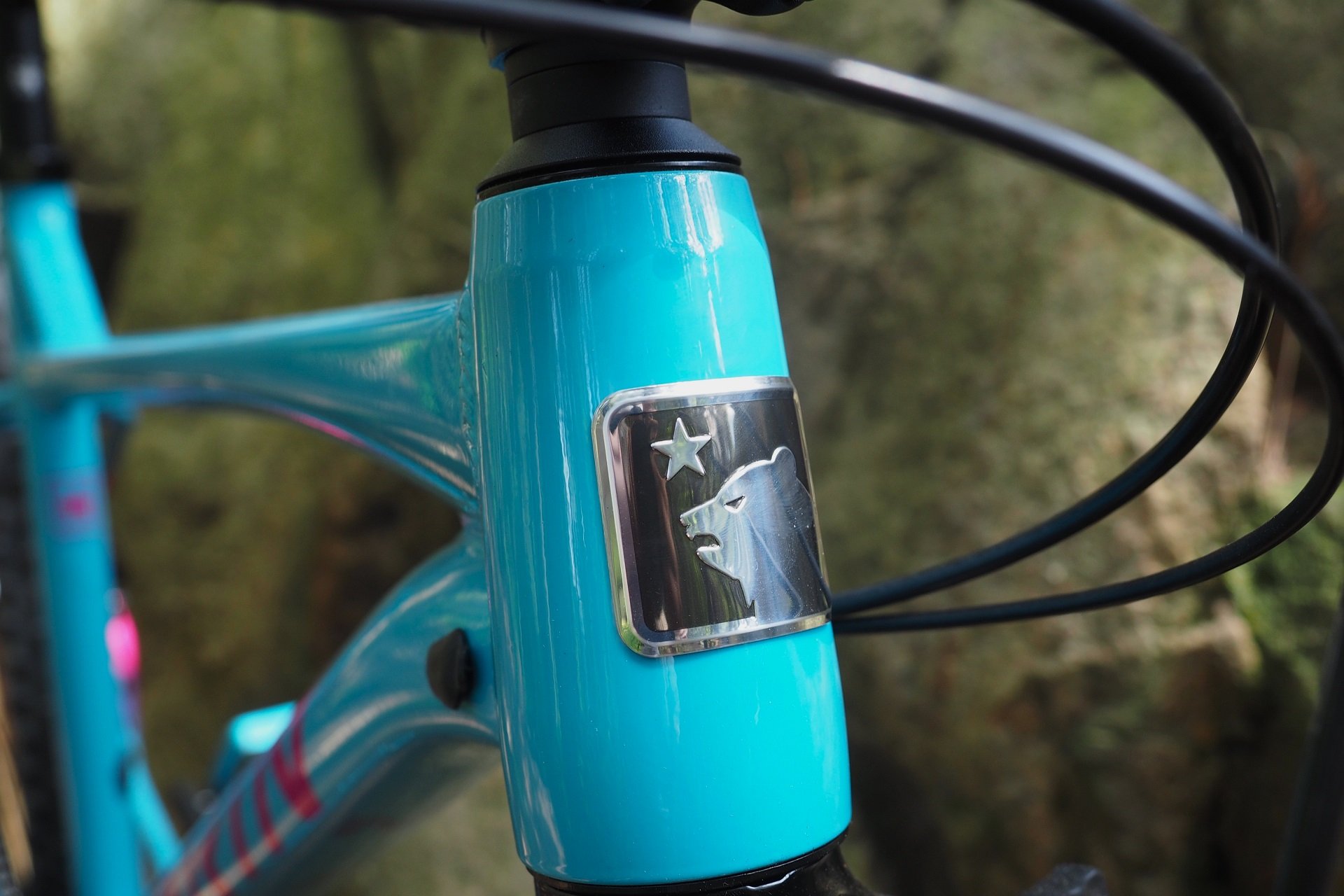
Handlebar height is also very quick to adjust via headset spacers. A centimeter, even five millimeters, can make a huge difference. Feel encouraged to ask shop staff to raise or lower the bar during your test ride experience so you can feel the difference.
Getting Fit
Most mountain bike companies have figured out that it's a lot simpler to cut a handlebar than to add to it and so you'll find that most budget mountain bikes come with 780-800mm wide bars. In the case of my brother, that will be perfect but as the runt of the litter I'd be cutting them down to around 760-770mm depending on the bike. On my wife's bike the bar would be getting chopped to between 720-740mm.
Bar width has a degree of personal preference - and learned preference - but all the same I regularly see riders, and especially groms, on handlebars that are significantly too wide for them. A couple inches of bar protruding out from either side of their hands, which are splayed out with arms straight and their wrists locked out at extreme angles. Never mind how much less dynamic such a position makes you on a bike. Just, ouch.
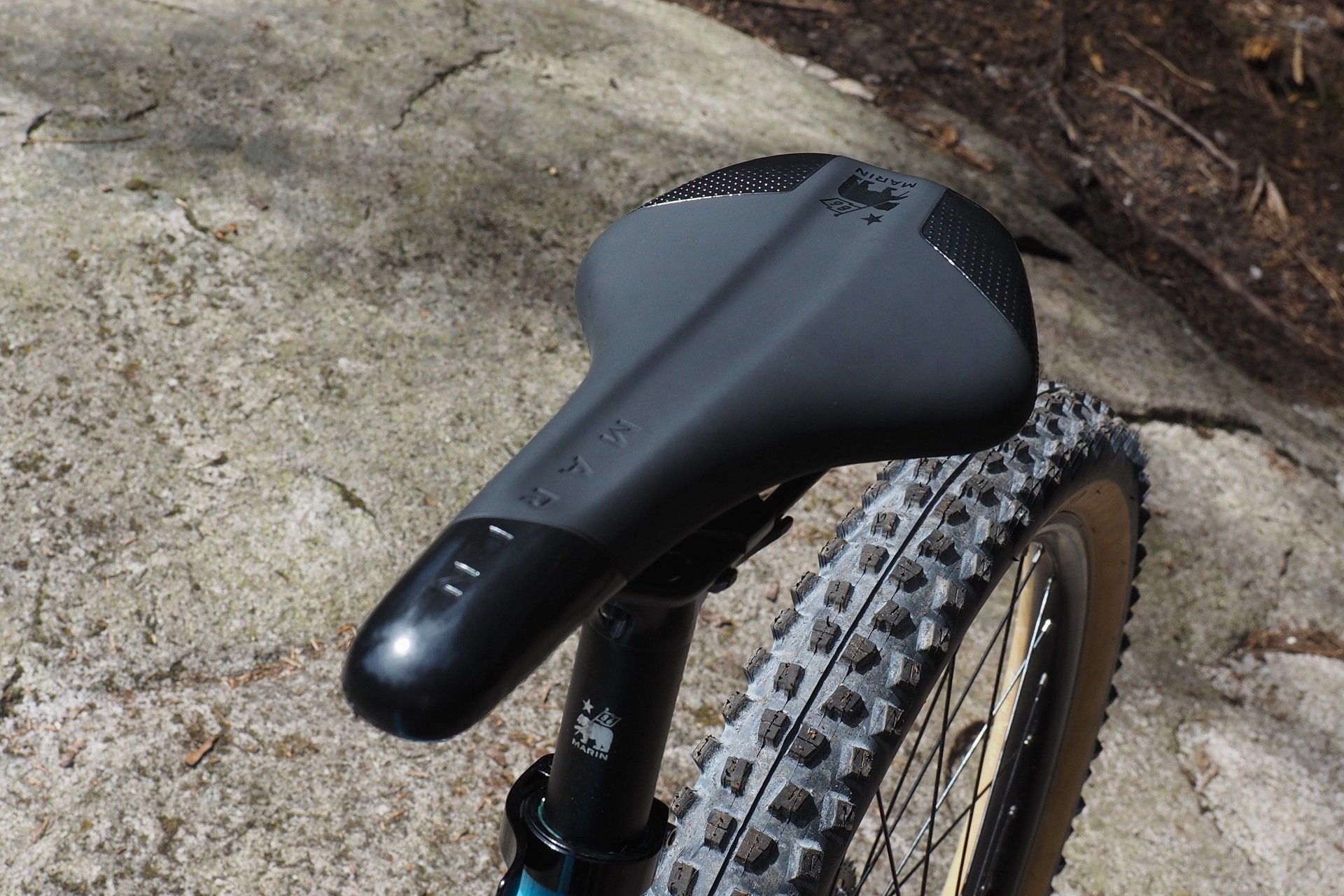
I'd love to see every budget bike come with a basic WTB Koda and just call it a day. It's a perch that will satisfy the vast majority of riders the vast majority of the time. I get that's not realistic at lower price points though and preamble aside there are options for inoffensive saddles at cheaper prices, like this house-branded Marin.
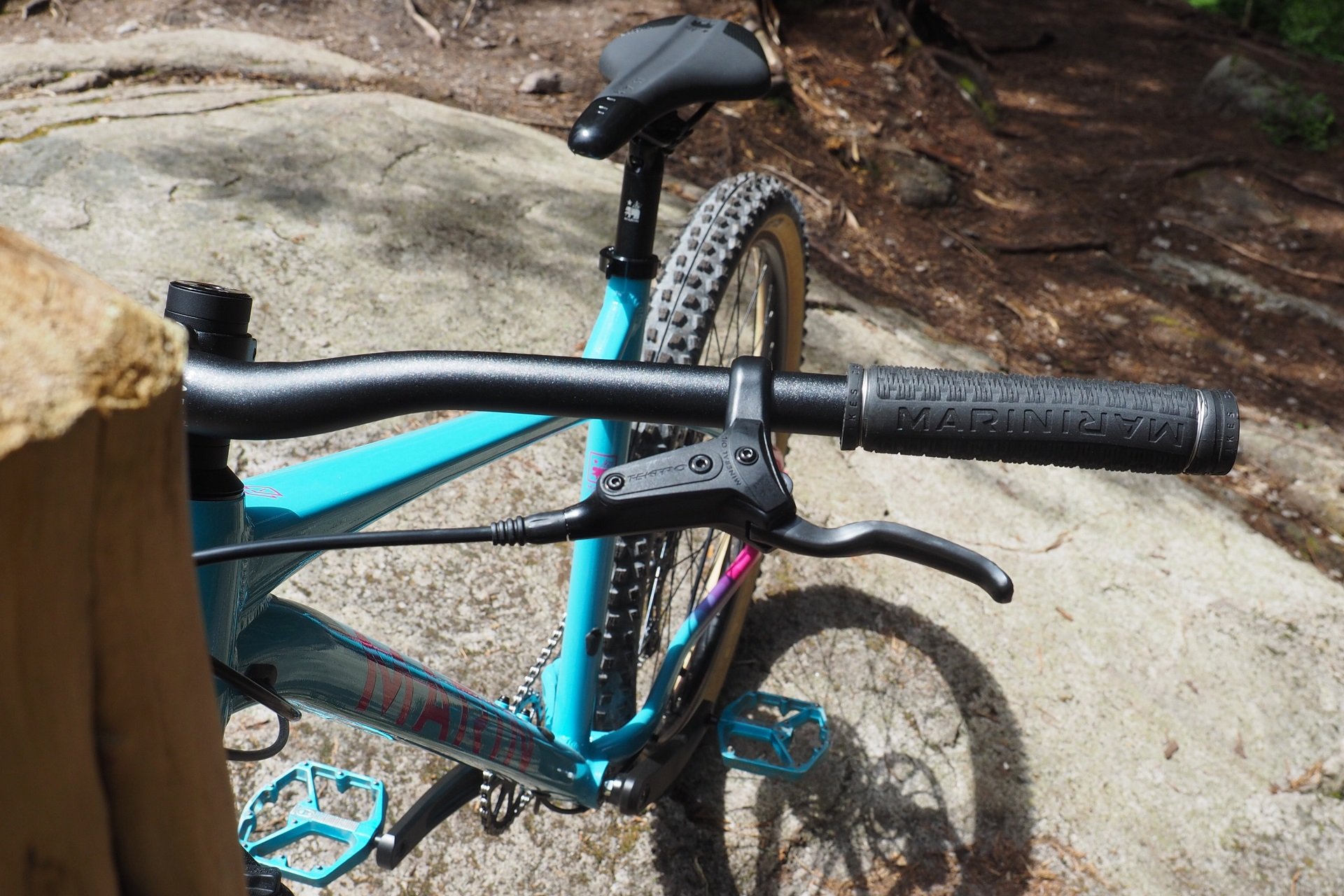
When it comes to grips I'd much rather bikes ship with comfy push-on rubber handles than the crappy, uncomfortable, lock-ons that many companies choose. For the record, these don't come wired; that's something I did at home. The bar is currently uncut but I should chop 1.5cm off each side and raise the stem another spacer.
Bar height is another adjustment that's available, the number of spacers above and below a stem. When it comes to bike fit, centimetres really matter and changes in position will have an effect on weight distribution, front wheel traffic, and comfort. The person helping you with your budget bike purchase will set the rig up neutrally but, if you haven't already discussed it, this is a great time to mention all those old injuries you're carrying around. I personally find that most budget bicycles put the bar too low for me, which results in too much weight on my hands and wrists and discomfort in my shoulders and neck. This is easily resolved with a higher rise bar than stock, but again this is another expense.
Chances are a basic fit from the shop, including sizing the bar and a saddle swap as necessary, is all you'll need to have a great time getting out mountain biking. If you ask, the staff helping you should be happy to show you how to adjust the saddle angle and position yourself so you can continue to experiment with what works best for you. That said, if you get out on the trails and you are not comfortable on your bike, do not hesitate to head back in and explain what you're experiencing. Chances are the shop you're dealing with has heard it all and the staff there will have some solutions for you to try.
Pedals
Real mountain bikes don't include pedals. Sorry. Regardless of whether the pedals are aluminum or plastic (resin, glass fiber, injection moulded, composite or however they're being marketed), the key is that they need to have metal pins. When you have your feet weighted into the pedals, the right platform will feel like your shoes are attached to them. It's a great idea to try a couple different pairs as even the newest rider will often have a preference in platform size or shape.
There are a lot of options but chances are you're looking for a pair of decently grippy flats and the shop you're working with will have a couple favourite options towards the more budget end of the spectrum. We're years removed from one-size-fits-all with platforms so if you're flaunting some flippers there are proper large platforms that will support your feet.
If you're in a Kona dealer, whether you're buying a Kona or otherwise, they'll have the excellent WahWah 2 pedals in stock in a composite (read: good plastic) body in two sizes with really tenacious metal pins. Great option. Many shops carry the RaceFace Chester or OneUp Composite which are both good options as are Crankbrothers pedals in this category. Buy pedals with sealed bearings if you can spring for them, they'll spin nicer longer.
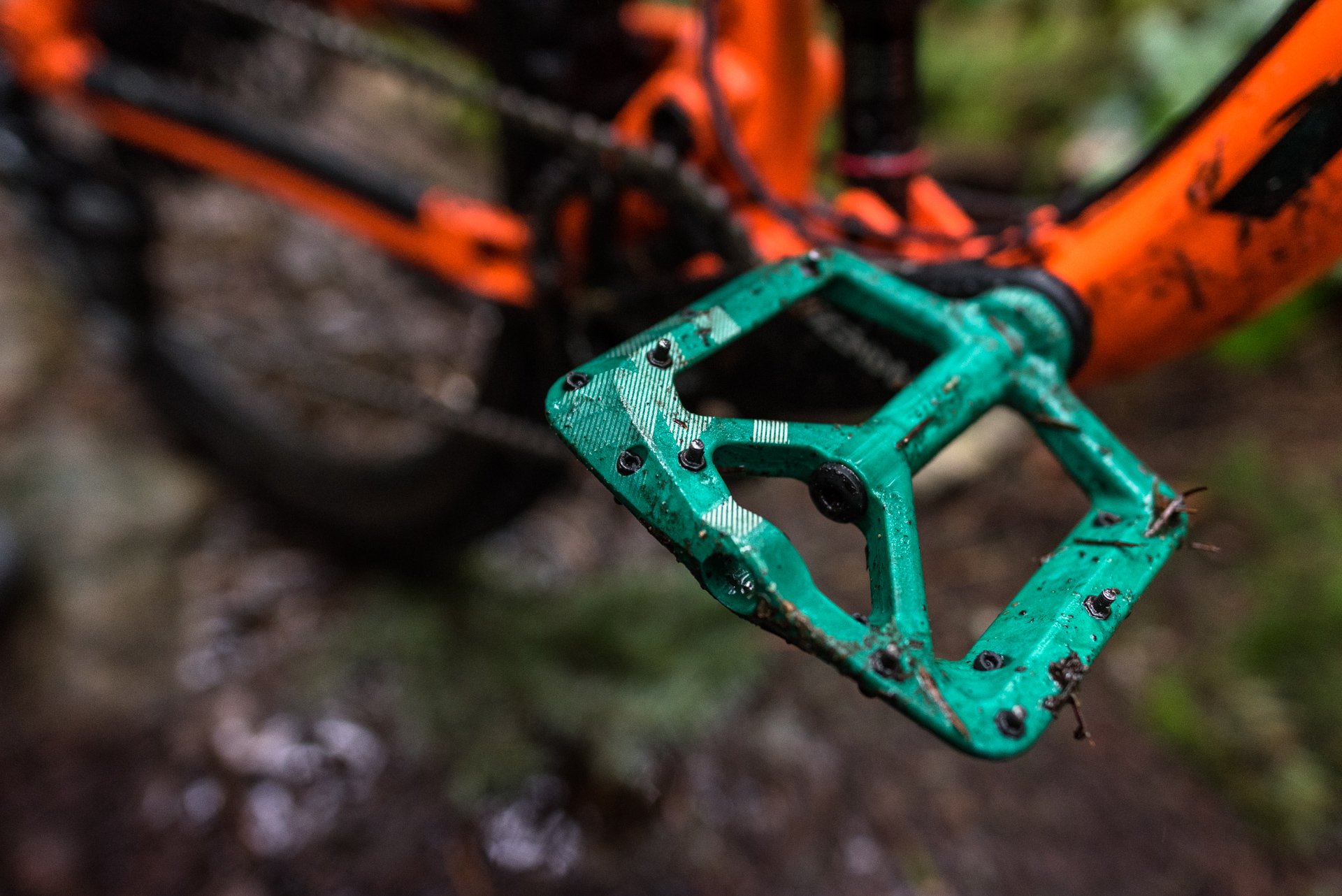
There are a number of good options with composite (good plastic) pedals with sealed cartridge bearings. Like Kona's Wah Wah 2 which comes in two different platform sizes. Photo: Dave Smith
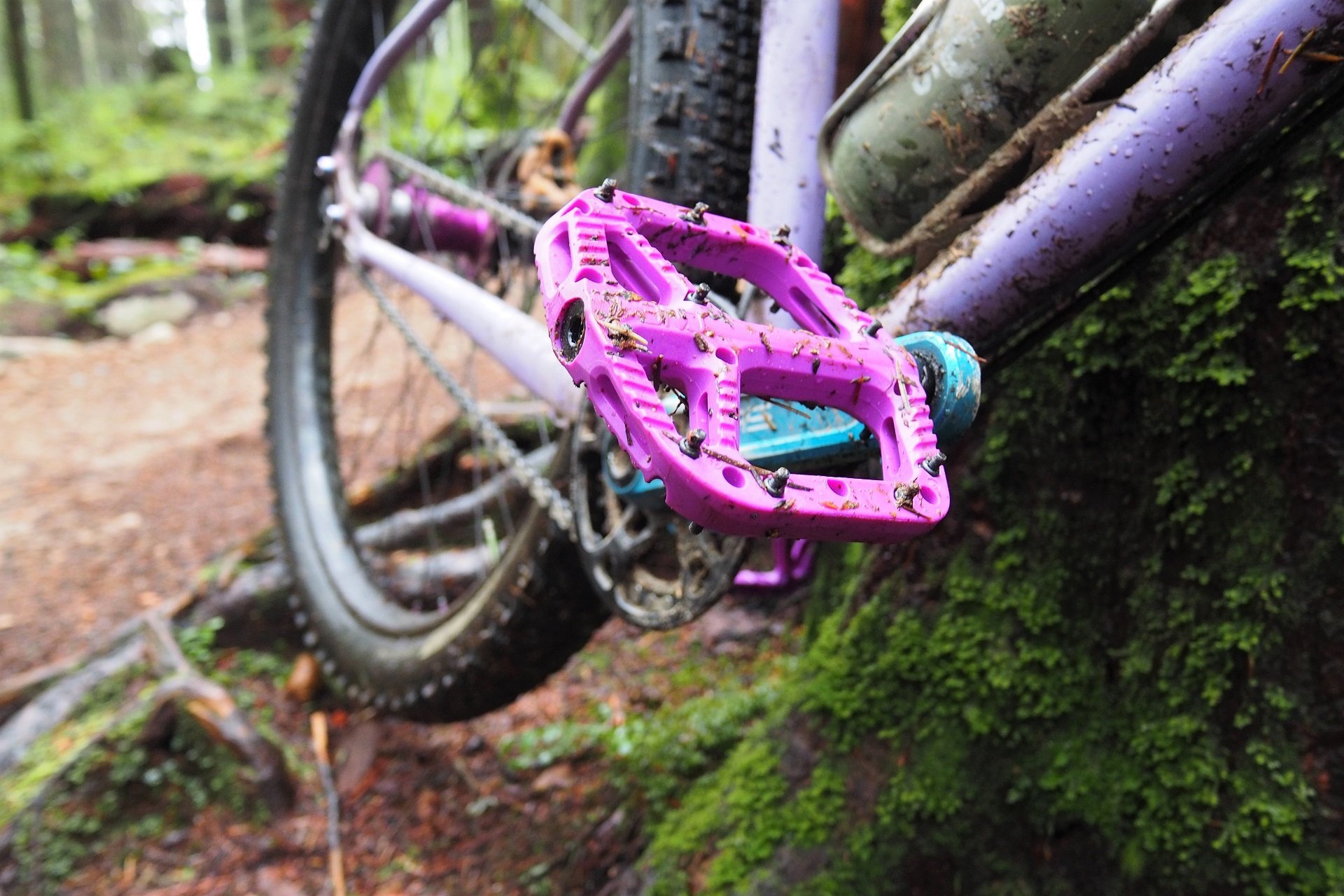
OneUp Composite pedals are another great option. They have a unique shape, sharp pins, and excellent grip. For a deeper dive on flat pedals and flat pedal shapes please check out the 365 Day Flat Pedal Challenge.
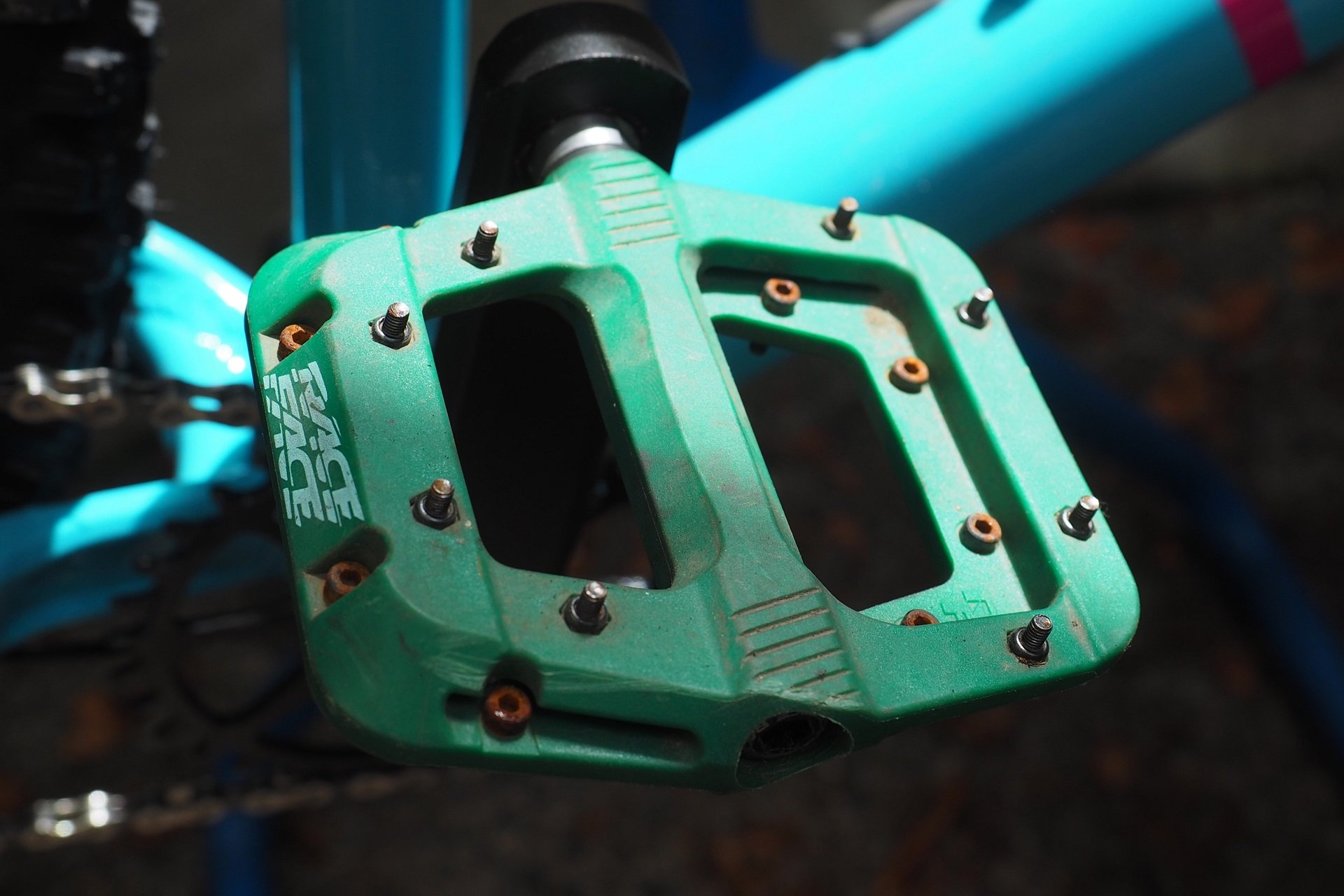
I have a pair of Race Face Chester pedals that survived their review period and then did a couple of years of hard use on my cargo bike. These things just keep going, tight and quiet. Not as grippy as the OneUp but that's not universally a bad thing.
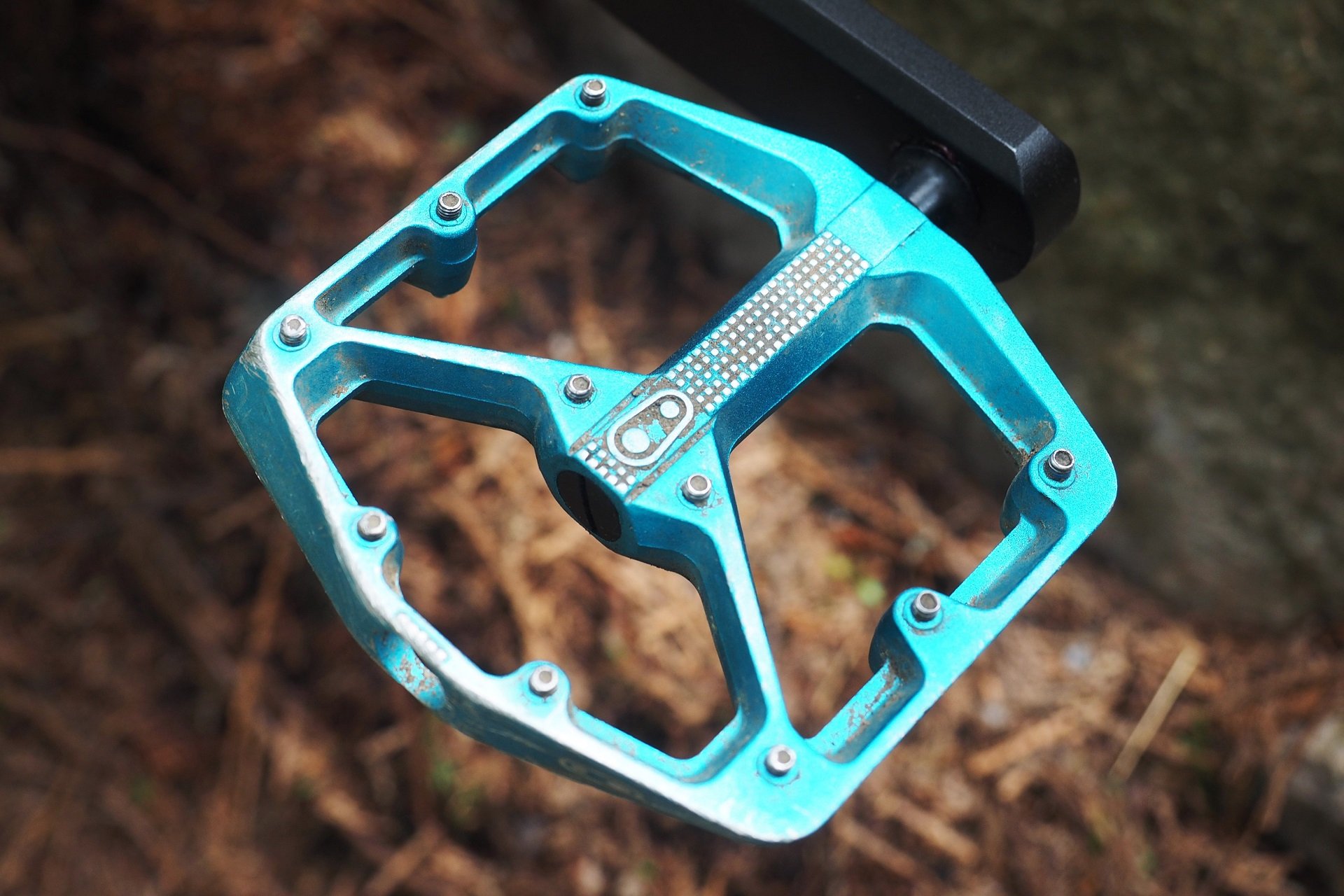
I've actually been riding this Marin SQ1 with a pair of Crankbrothers Stamp 3 pedals on their second set of guts. It's their large version. Good pedals are good pedals in composite or aluminum.
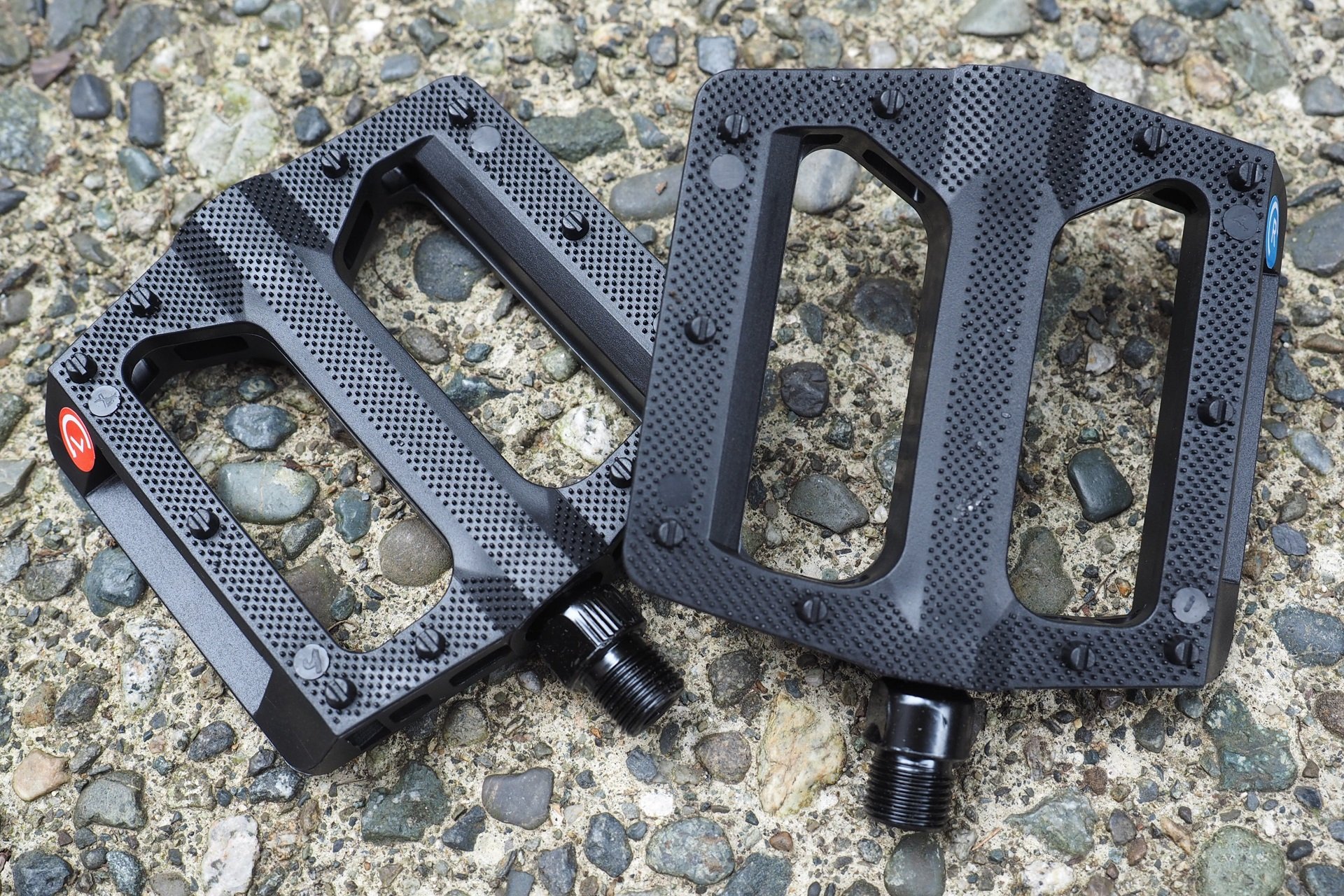
Just don't leave the shop, or even take a bike for a test spin, with crappy townie pedals like these. Loose balls, crappy plastic, and pin-free. If you need a bike with tires that grip the trail, you need a bike with pedals that grip your shoes.
Tubeless Time
Some riders are still using tubes, but for the vast majority of riders they're a quick repair option only these days. Who doesn't want a more supple ride, improved traction climbing and descending, and fewer flats? At the sub 2K price point most bikes will come with tubes installed and making the switch is a conversation that will need to happen. Hopefully the shop you're working with will initiate the discussion. This is another added cost in terms of valve stems and sealant, but most shops will waive the labour and two that I talked to feel strongly enough about a tubeless mountain bike experience that they'd only charge for valves - sealant, tape, and labour waived.
Stories abound of shops unwilling to tape and about tubeless bikes that come with tires that aren't 'tubeless ready' and in particular tires with wire beads. I guess I'm old enough to remember when most tires took a little extra effort to get seated up but I don't think it's a big deal personally. I've setup plenty of cheaper wire bead tires with an air compressor and an extra wrap of Gorilla Tape, so I'll stick with my rule to tubeless everything.
Squidulous Toucan does note that if you're planning to ride in our local conditions year round, it can be a very good idea to setup your bike with a softer, stickier, rubber option up front and save the stock front tire as a spare rear option. Again, this is an added expense, but it's one that comes out in the wash. Since most folks getting into riding tend to buy their fresh rig in spring or early summer this is an expense that could be put off until fall. Just remember, if you're planning to ride slick rocks and roots in the 'off season' rubber is the number one upgrade.
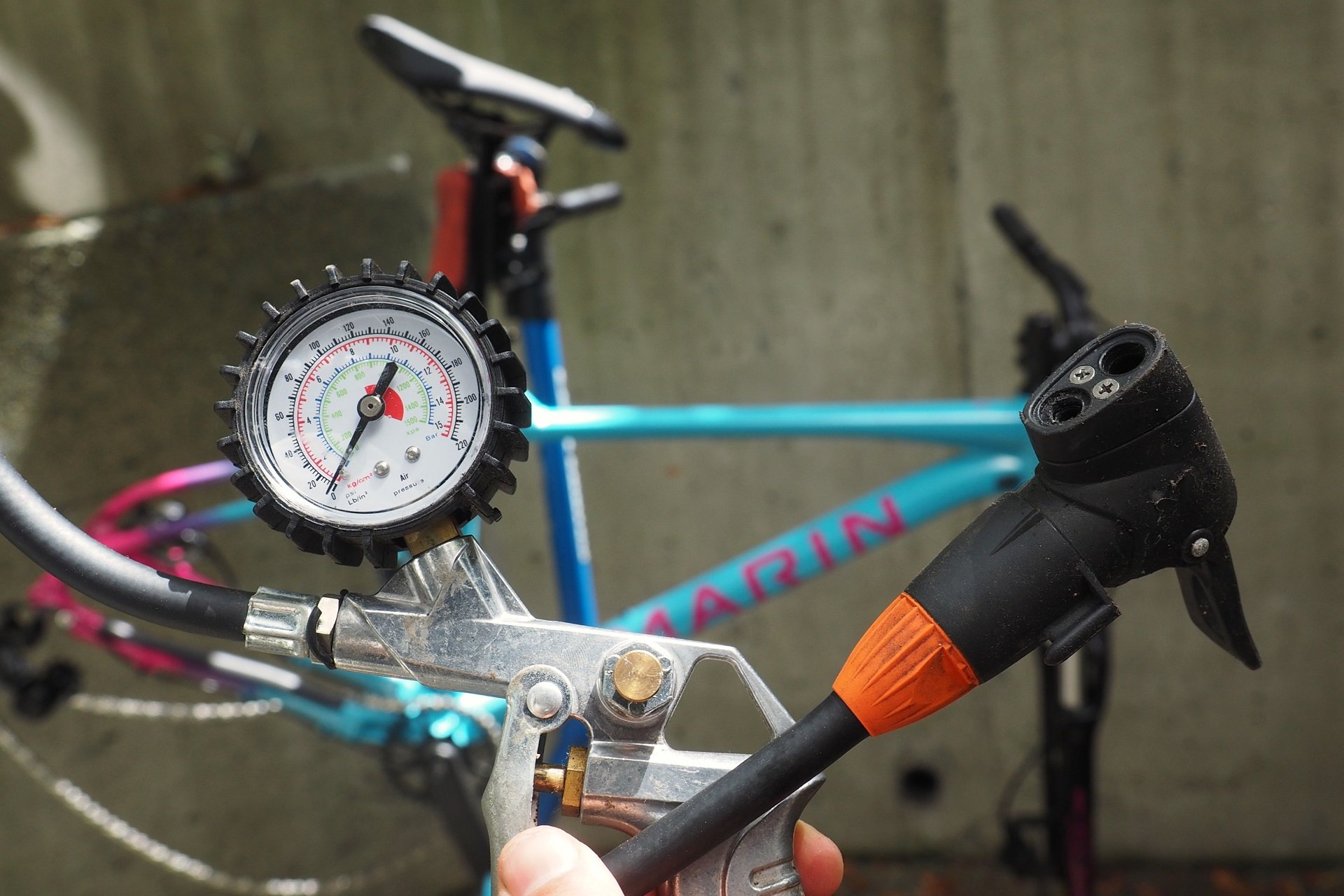
I usually can do a tubeless setup with my floor pump and some technique. That was not the case with these wire-bead Vee Rubber Flow Snap tires. But they were a literal SNAP with my compressor despite not saying 'Tubeless Ready' anywhere on the sidewalls.
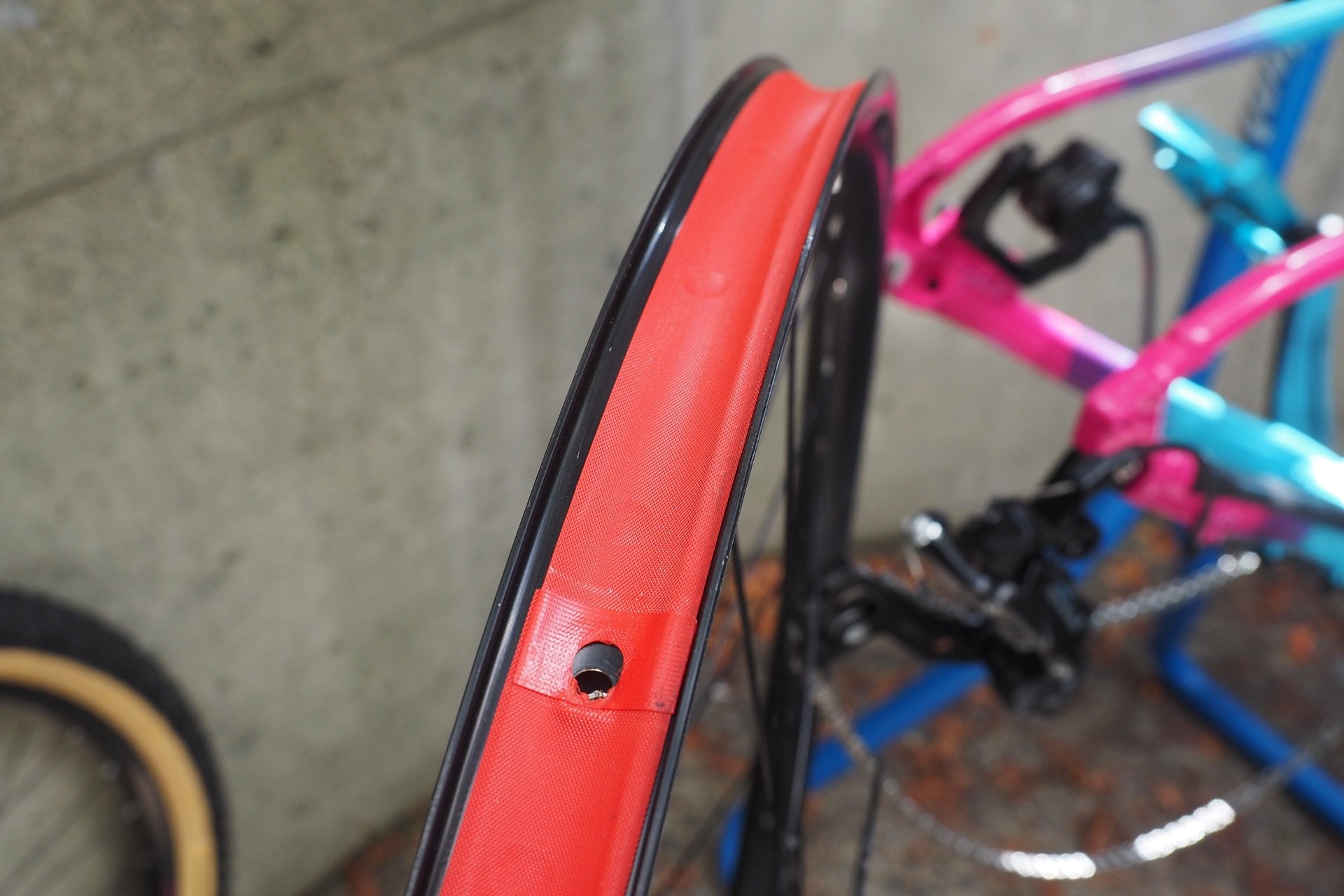
I despise these crappy floating rim strips and would like to see every bike taped for tubeless out of the box. Companies don't even have to include valve stems, and many customers may stick with tubes, it's just a better way to do things for pennies.
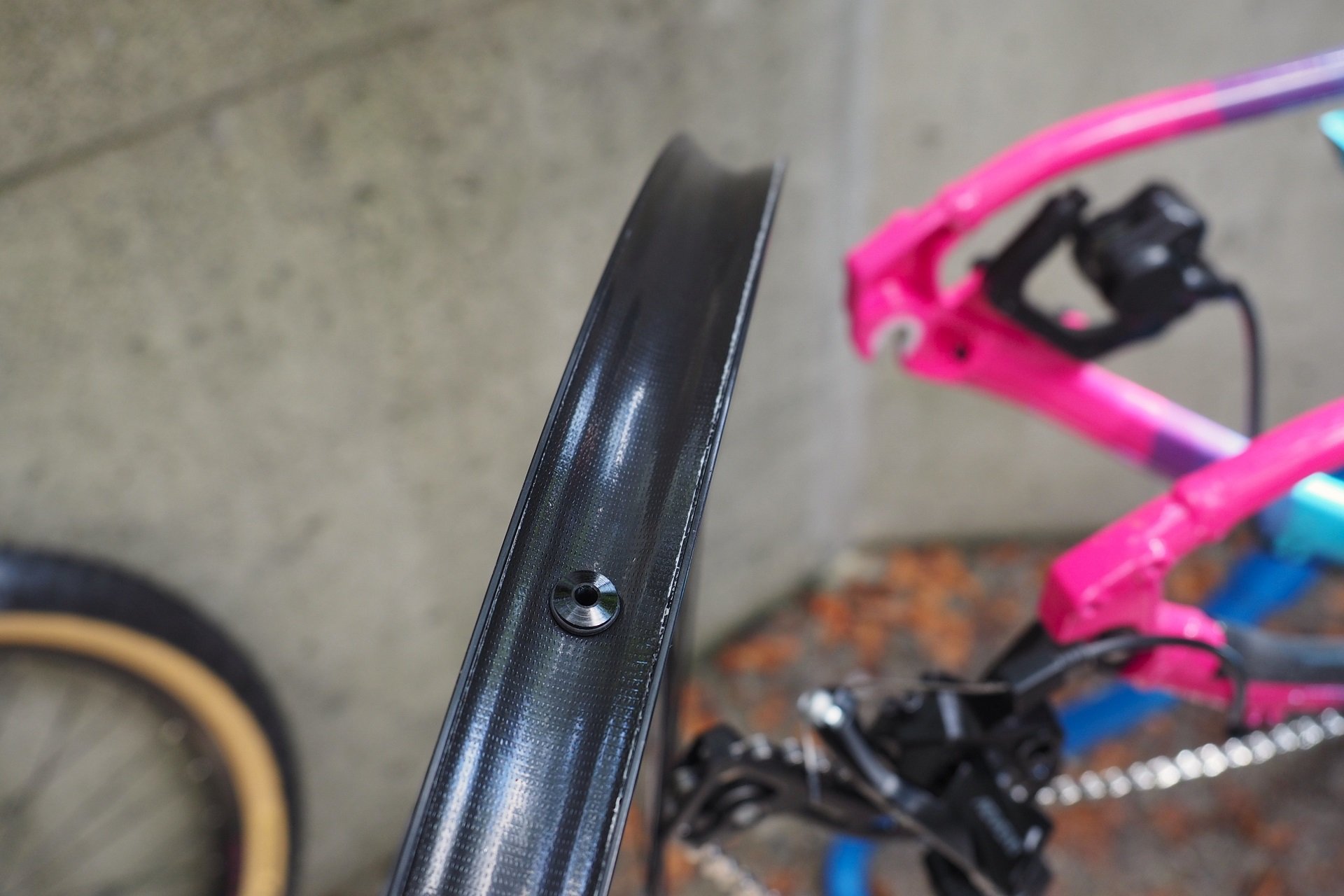
This isn't the first set of house-branded Marin i29 width rims I've done a tubeless setup on. One wrap of tape, insert valve stem, and we're good to go. The pinned double wall rims aren't lightweight but they've held up really well in my past experiences.
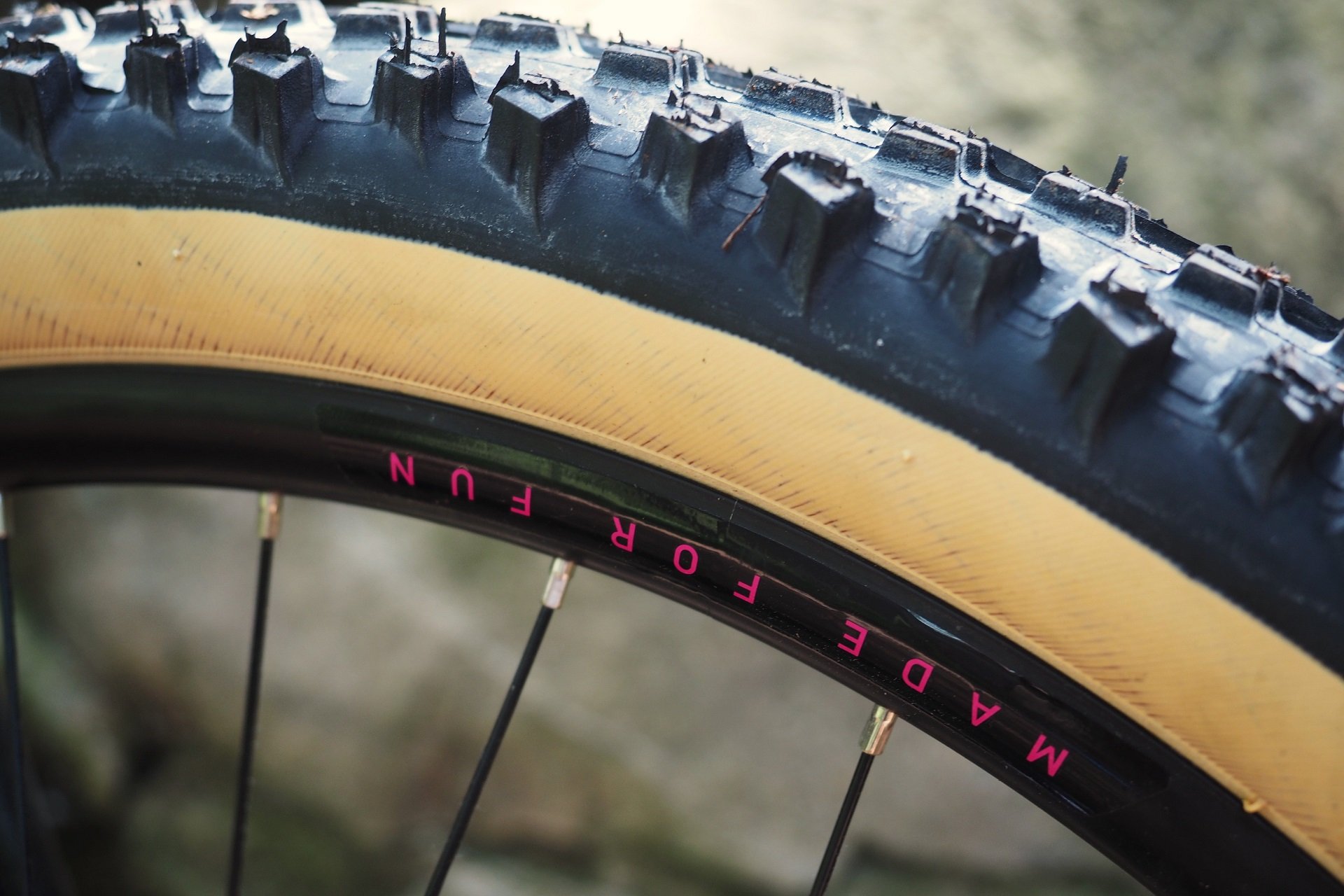
The Flow Snap tires have a good pattern and volume but the 'MPC' compound could easily stand for a Million Parsec Compound. Even cheating on pressure they're a dry-conditions-only tire. If my review carries into the greasy season I'll be looking for a much stickier 2.6" tire for the front.
Accessories
Footwear is important. You want a flat, uniform tread that will interface properly with the pins of your flat pedals. Cycling-specific flat pedal shoes are vast improvement over street shoes for riding in but even a good basic option like a Giro Jacket II is going to run you over a hundred dollars. If you're just starting out a decent hack can be a pair of whatever skate shoes are on clearout at your local skate shop. My buddy just picked up a pair of Vans for about thirty bucks (plus tax) and those would certainly do the job.
Armour. I know you'll see a lot of folks out on the trails without any gear on but if you're just learning I'd recommend some knee pads, gloves, and, of course, a helmet. Starting out, all this gear can be overwhelmingly costly. Like a pair of skate shoes, Mechanix gloves from the local hardware store can get you by until you're ready to seek out something that breathes better and fits better for the application (or, like a few of my friends, Mechanix gloves might just be your jam period).
Your shop will have their favourite high-value helmet and there are some good ones out there. The Giro Fixture MIPS is a popular option for about 100 CAD that's a good basis point to start from in deciding whether to make a bigger investment in a brain bucket. For riders in places where there's a steeper learning curve to get into this activity, like the North Shore, I'm a big proponent of helmets with a chin bar. I rarely mountain bike without one myself. This is an extra up front cost, certainly, but a decision that can easily pay for its.
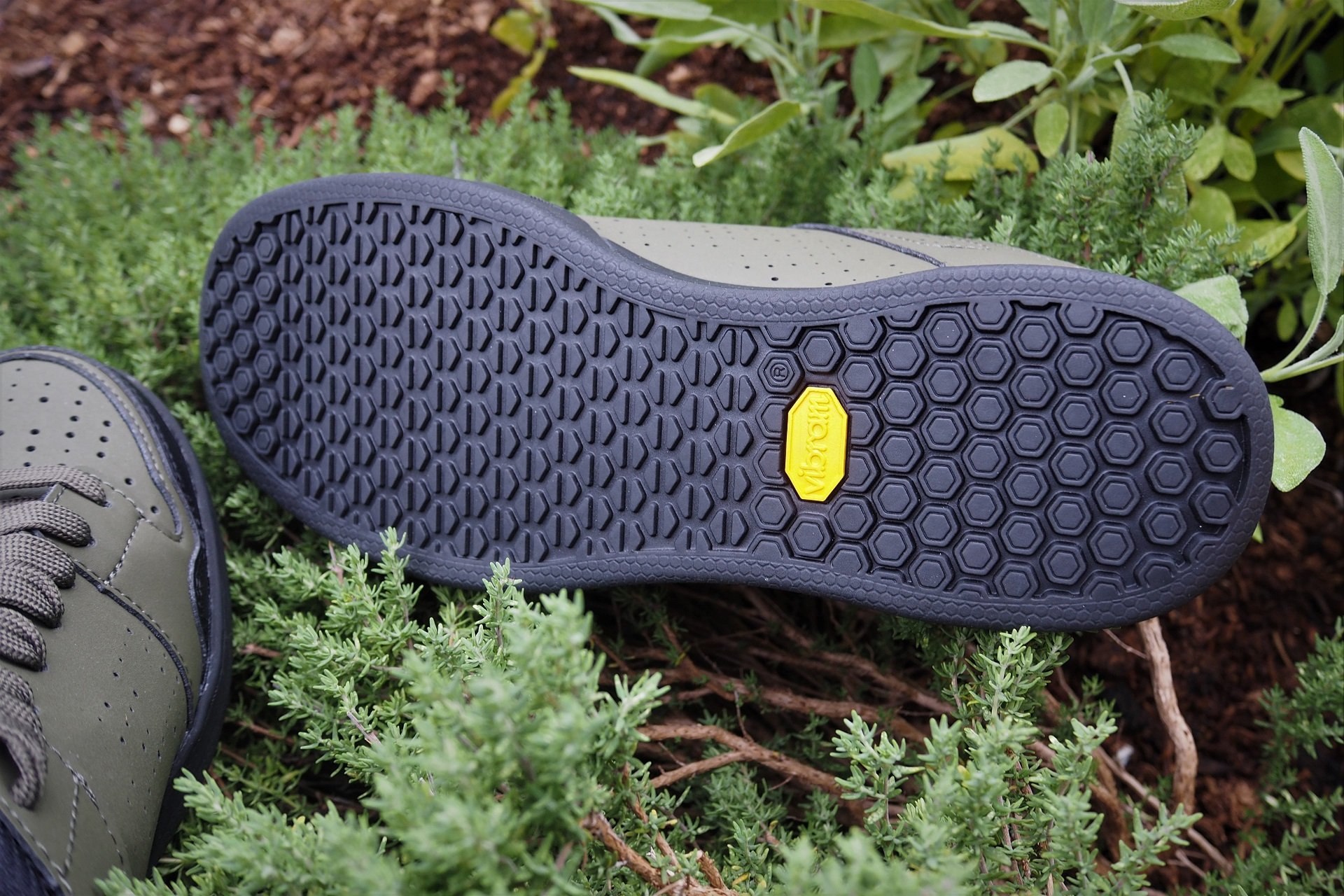
A set of shoes designed for pedaling and interfacing with flat pedals makes a big difference to my riding experience. The Giro Jacket II doesn't have a particularly sticky rubber sole compared to the legendary Five Ten Stealth.
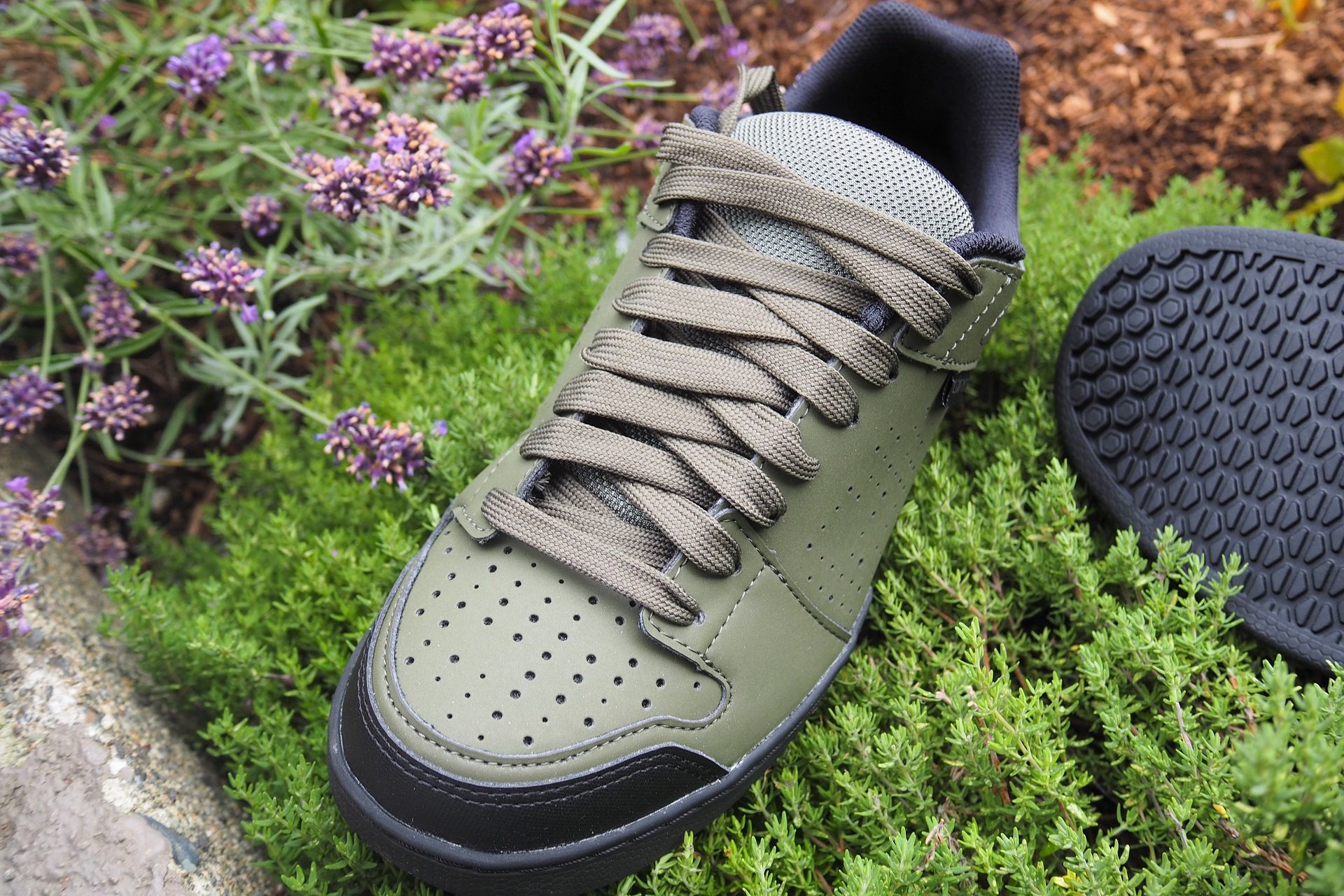
But, construction is great and they held up very, very well. I think they're excellent for the price of entry when paired with a pedal that bites. That's especially true on the blue-level trails someone would be using a bike like the SQ 1 to ride.
Even if you have no clue where to start using them, you should always be carrying a basic multi-tool, a mini-pump, and a tube. Self-sufficiency has been a fundamental aspect of mountain biking since the beginning and the helpful person who is going to stop and give you a hand if you have a trailside mechanical issue will have something to work with. I've ridden many places and I think I can say with some authority that if you get hurt or otherwise need a hand, the mountain bike community has your back.
You don't have to spend a fortune, but at the same time you want a pump that's going to work when you need it. Blackburn, Lezyne, and SKS are all common good options. I've had the same SKS Airboy XL for over a decade so it's an easy recommendation. On the multi-tool front, I like the Park IB-2 for about 30 CAD. You can absolutely spend a bit less but the IB-2 is a nice tool to use, where a lot of multi-tool blocks are very clunky, so it's again something you'll have forever. You'll have two tubes to roll up post-tubeless conversion so that's looked after.
Don't forget a water bottle and a cage. Hydrate!
Future Upgrades
Most the mountain bikes in my price range here are won't come with a dropper post and that's a good thing. Bikes under 2K CAD that have a dropper as standard equipment have invariably received some other down-spec to cover it and the stock post is unlikely to provide the optimum amount of drop or be of particularly good quality. At the same time, we're buying a bike on budget here and coming up with an extra 300 CAD for a good dropper post and nice remote may not be in the budget with all the other-other stuff required to get out and ride.
All shops provide some kind of discount on products purchased along with your bike (helmet, pedals, etc) but what about products that you would buy at the same time budget aside? If the plan is to come back in a few months and upgrade the rubber for winter or to add a dropper post in the new year then you should ask the staffer helping you if the shop would extend the purchase discount to those items. Based on my experience, they'll say yes. Then ask them to add a note to your receipt, just in case they're not in when you come back. This is a small investment in building a relationship with a rider.
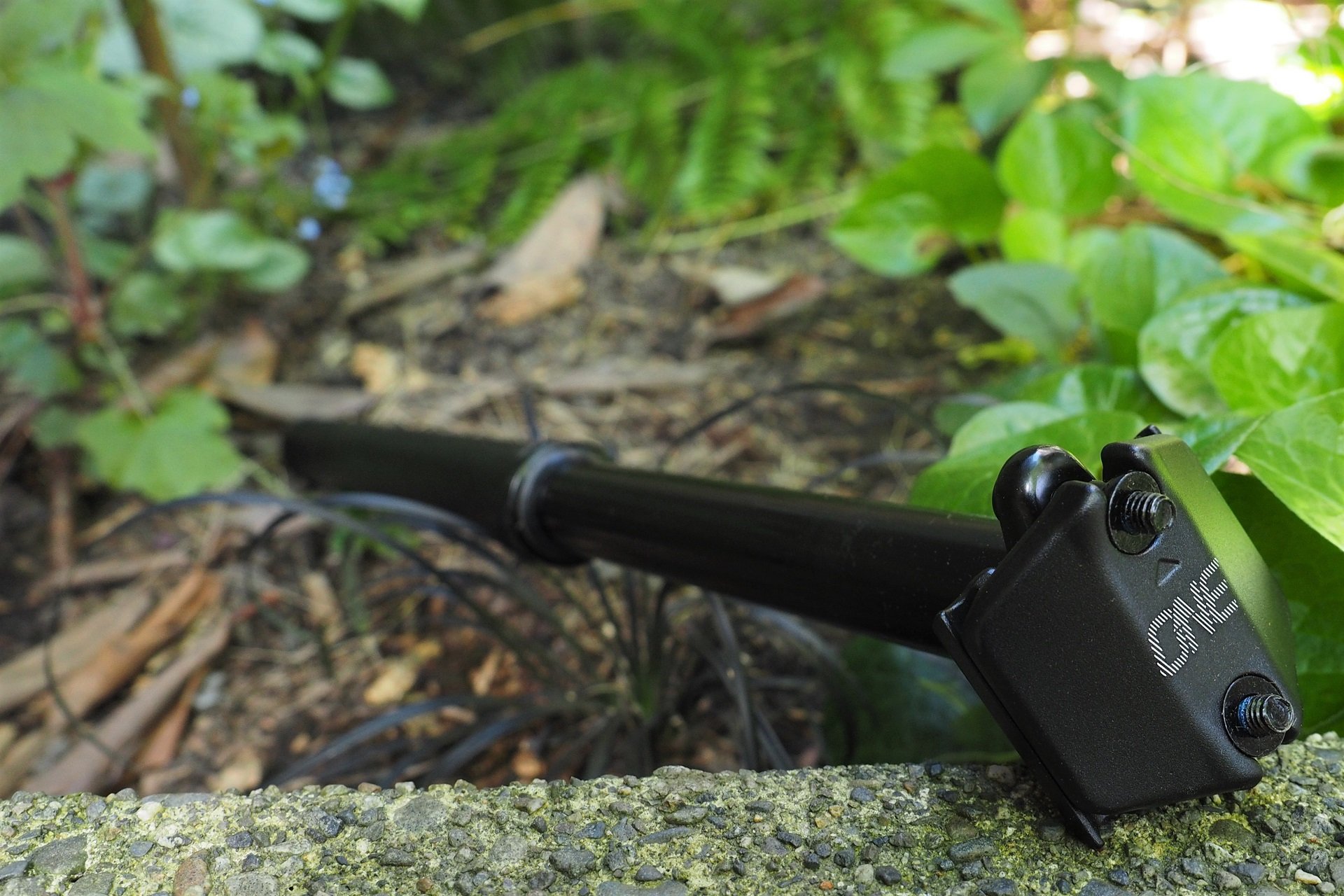
OneUp's V2 dropper post is at the top of many rider's lists because of the best in class travel length. A post a good remote run around 300 CAD or 250 CAD without one.
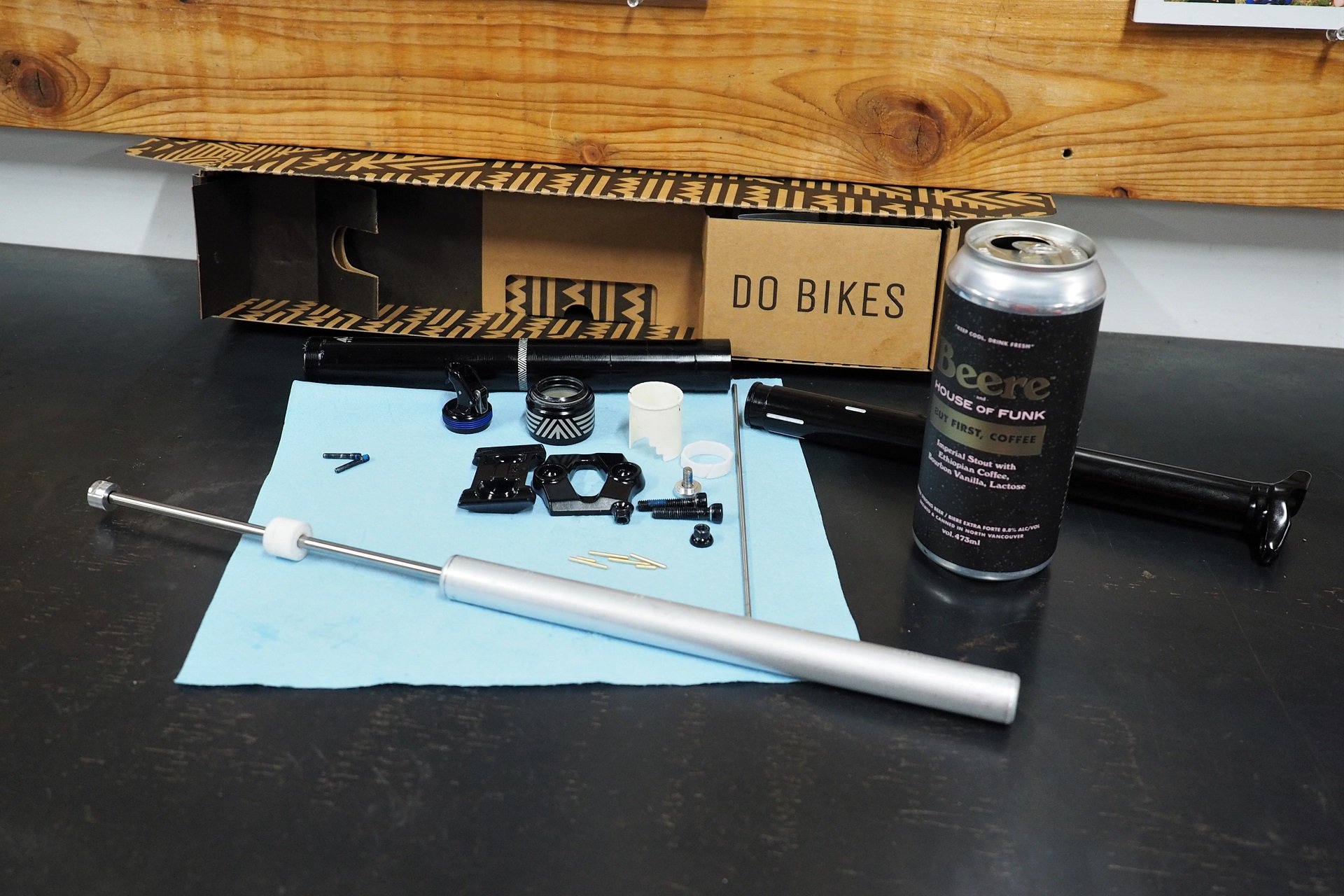
There are some fantastic values to be had from a variety of dropper posts equipped with Wintek cartridges. Perhaps none more so that this PNW Rainier 3 at 180 CAD without a remote.
Pedlar's Dilemma
Minimum bike. Maximum expectations. Selling budget bikes is often not easy. As impressive as a MicroShift clutched 1x drivetrain is, it will never match the performance of a fresh XTR cassette, chain, derailleur, and shifter that combine to cost as much as that MicroShift equipped mountain bike. The common SR Suntour XCM32 is a really decent fork, but light riders are going to use minimal amounts of travel, heavy riders are going to bottom out regularly, the coil spring isn't silent, and all those riders will probably find the fork is overdamped. I can go on and on.
As someone selling bikes, it can be impossible to balance a riders' expectations, future requirements, and budget. It's very easy to get into the 'for a few dollars more' cycle or set basic requirements so high that it prices a lot of folks out of mountain biking. Or at least getting into mountain biking at your shop. One reason I think everyone selling bikes in shops should spend real off-road time on basic mountain bikes is to have a proper sense of where they're really fun and where their limitations show up. Otherwise they may end up projecting their personal equipment needs and expectations onto riders who will always be happy on cruisy-smooth trails. For one, I'd bet we'd see a lot more shop-folks riding top-end suspension and brakes paired to MicroShift drivetrains on their own bikes.
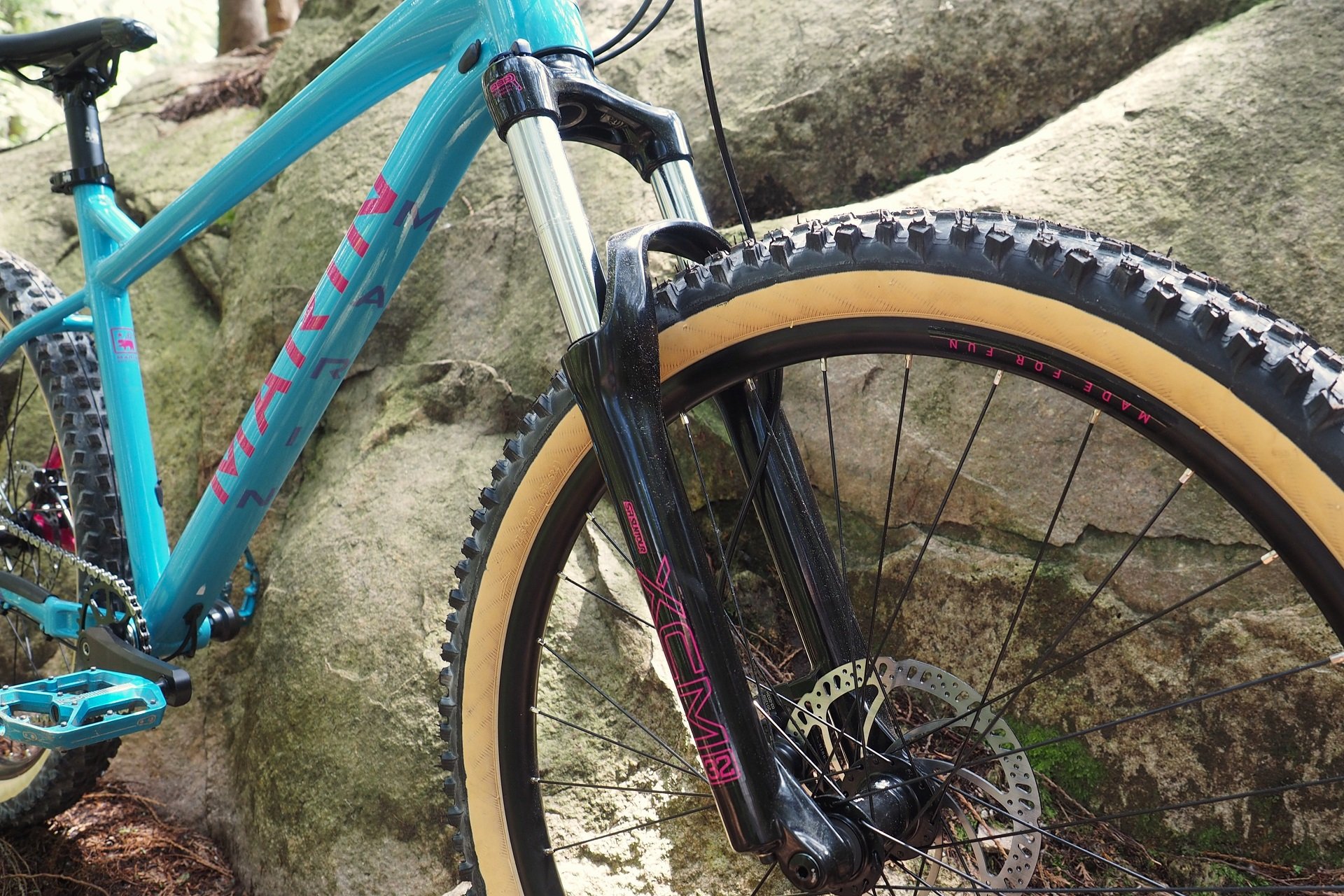
Heavy steel stanchions, non-adjustable hydraulic rebound that's certainly over-damped, and a single rate of steel spring that's not going to be optimized for anyone. The chassis is plenty stiff, the travel takes the edge off in a controlled way, and a basic lower service is child's play. I can't complain about the SR Suntour XCM32 on a 1350 CAD bike.
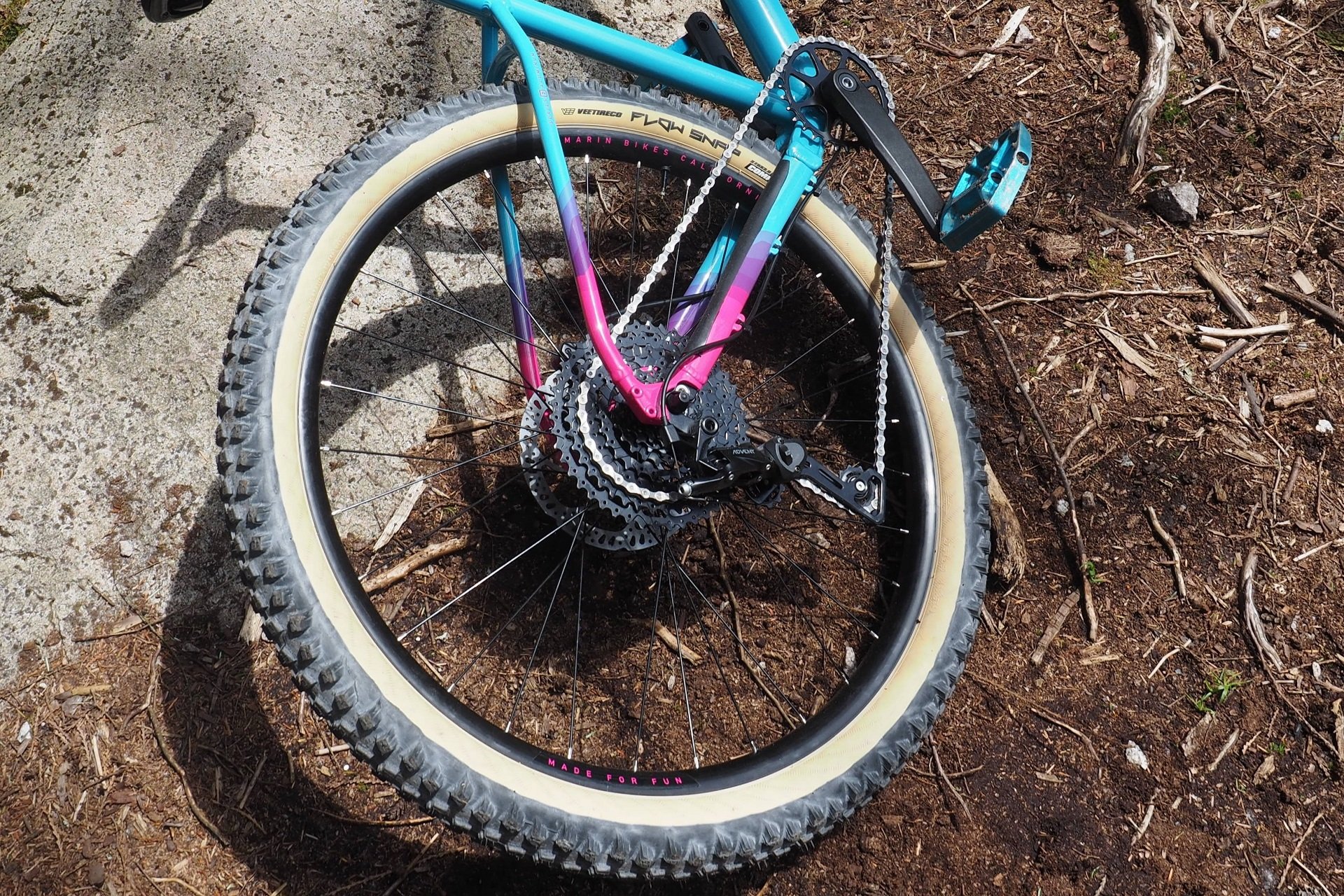
I also have no issue with the, increasingly common, QR 141x10mm rear end. The frame is plenty stiff without the added cost of a thru-axle setup. In fact my only real grump with the SQ 1 is the square taper crankset. It would be near the top of my future upgrade list right after a sticky front tire and a dropper post.
Buying an upgrade-worthy bike you can afford now and then investing in it as you grow as a rider is a valid way of experiencing mountain biking. There are often times in mountain biking when the lower-priced option, with strategic min-maxed upgrades, will be a better value than a more expensive rig with all the components bumped up a step.
Some shops choose to set their price of entry higher to avoid significant compromises. For 3K CAD you can head into a shop, in 2022, and grab a hardtail with a reasonable fork, great tires, solid 4-piston brakes, a good 150mm dropper post, and almost the only drivetrain that matters. That's a sweet value. But it's also more than double the price of the Marin San Quentin 1 I used as my basis here. Apparently, some shops have no floor for what they'll sell in terms of creating expectations (see cheap pin-less pedals). If you, or someone you know, is genuinely in the market for a proper off-road bicycle on a budget, around $1500 + tax is a realistic investment for a fun experience on blue trails. The fact that a lot of folks are riding suspension forks that cost more than that is a reality that should be reflected in the performance expectations of the purchaser without impacting their stoke for getting out on the trails.
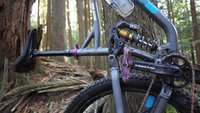
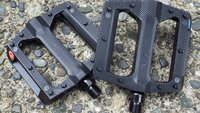
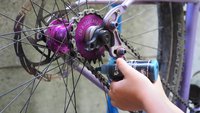

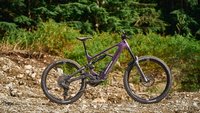
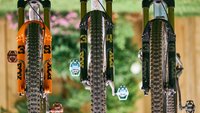

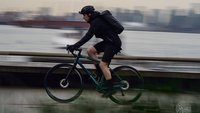
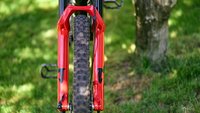
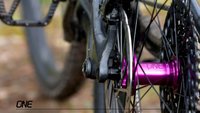
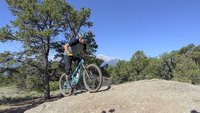
Comments
cheapondirt
1 year, 11 months ago
I'm bookmarking this one for future sharing.
Not that anyone I know has bought a $1500 hardtail lately... They all seem to think they'd rather have a 2003 Santa Cruz Bullit for the same money.
Reply
Andrew Major
1 year, 11 months ago
Cheers. I know it’s a relatively huge time investment to read. Twice my usual goal for max length. All that for a piece about buying bikes that cost less than a high end suspension fork.
I can only dream that someone gets something out of it. I really appreciate the folks that run NSMB, Cam & Pete, for giving it a shot.
Reply
Poz
1 year, 11 months ago
Same here, bookmarking. I tend to get asked by non-biker friends what to look for. This sums up my rambling and soapboxing quiet succinctly! And it will save the dumbfounded looks they give me when I tell my my fork is worth more than the budget they have.
Reply
Andrew Major
1 year, 11 months ago
It's really incredible to see two folks riding together where one's fork is worth more than the other's bike and they're both having a great time. I mean, that's not saying the high-end fork isn't totally worth the investment but it's still an aspect of mountain biking that I love.
I've done some awesome rides where I was on my rigid and friends were on their 170mm rigs and we all had a blast.
Reply
DMVancouver
1 year, 11 months ago
I agree with most of it. The one I’d debate is tubeless - for a casual, less maintenance-Inclined rider, tubes have some advantages. They hold air longer than tubeless, so you don’t have to be as religious about getting the pump out every ride. And there’s no sealant to dry out over time. For someone who is lighter and/or less aggressive, they can get away with tubes without frequent pinch flats.
Reply
Andrew Major
1 year, 11 months ago
I had a bit of a chuckle about the sealant drying overtime. If you sat at the trailhead and checked tires on bikes of all price points, riders of all levels, I’d guess you’d find a huge % of them have no liquid sealant left.
Many a time I’ve had a friend looking confused at a little tire puncture as air came gushing out. “Where’s my sealant?”
———
I agree tubes are generally cleaner and easier. Best practice is still to check tire pressure every ride. A couple psi in tubeless is probably not going to burn you but in a tube it could be a guaranteed pinch flat.
The one actual rebuttal I’d have is in regards to ride quality. Cheaper OE rubber (like these hard rubber / wire bead Vee’s) rides so much better without a tube in them. It’s one of those things where the return on investment going tubeless with low end rubber is actually bigger.
Actually, one cool tubeless experiment/experience is to AB test a Maxxis MaxxGrip EXO tire with a tube vs. a MaxxTerra EXO tire tubeless (or equivalent from another brand).
Reply
kcy4130
1 year, 11 months ago
I agree, for people that ride casually and infrequently, tubes are better. Except those that live in the desert or anywhere with cactus, thorns, etc: in such locales the hassle of tubeless is worth it even for casual/occasional riders.
Reply
Steven Hambleton
1 year, 11 months ago
If super cheap versions of Reserve Fillmores can be manufactured along with sealant injector/extractors like the Park Tools TSI-1 - then managing sealant will be a really easy process.
Reply
Andrew Major
1 year, 11 months ago
I have such a cheap system for this, all you need is sealant, a brake bleed syringe with the plunger removed, and a valve remover and it works great:
It's a slightly longer process than using a dedicated injector but I always use syringes that have died for their intended purpose of bleeding disc brakes so it costs nothing.
Wrenching on bikes I regularly use a Stan's injector with regular valves without issue but it's not something I'd bother buying for home.
Reply
Poz
1 year, 11 months ago
Take it one step further….. leave the plunger in then you don’t have to create suction to get it in.
Get your syringes at a medical supply store for a buck or two.
Reply
Andrew Major
1 year, 11 months ago
I find, unlike the thread-on Stan's system, that this doesn't make for a great interface - though it may be syringe-specific. My squeeze-the-tire technique works great. Still, as you say, for the buck-or-two price of syringes it's a cheap experiment.
Reply
MTB_THETOWN
1 year, 11 months ago
I respectfully disagree. I can't mountain bike with tubes without getting flat after flat. All those flats are going to make a new rider frustrated. If just cruising or commuting, or even on road, tubes are fine. But this article is about riding blue trails, and for real mountain biking tubeless is really the only way to go.
Reply
silverbansheebike
1 year, 11 months ago
Nice write up and a great comprehensive resource to send to any folks looking to get into the sport! also bookmarked.
Reply
Andrew Major
1 year, 11 months ago
Thank you!
Reply
Andy Eunson
1 year, 11 months ago
I do a little volunteer guiding for Monday Night Rides and I ride with a group of older than me folks too. (I call them the Antiques Road Show.) Bad shoes and pedals are probably the worst thing I commonly see. Poor set up of controls is the second thing and it’s just as bad. It’s hard to teach people to ride better when they try and grip the top tube with their knees. Or that can’t reach their brake levers easily. I can accept that some people are deathly afraid of aggressive pedals and don’t want to spend for shoes when they have hiking shoes already. That’s money. But adjustment of controls is free. And so many shops it seems don’t do this. Or even explain how to do it at home. Many small women I ride with are on bars that are too wide. Way too wide. My rule of thumb is if the riders hands are further apart than their elbows, something is wrong.
Pretty much all your advice is spot on.
Reply
Andrew Major
1 year, 11 months ago
Yes, start with the freebies. Brake levers in the right position with the right reach. Shifter (and dropper remote if spec) in the right position. Bar height optimized within the stock range.
And please, cut bars that are too wide. The range between personal preference and ride-ruining is fairly obvious to look at even if the exact inflection point is nuanced.
———
My experience - note, highly generalized with plenty of specific exemptions - selling bikes to older riders planning to hit trails is the perfect position is often higher than the steerer tube is able to accommodate with the stock cockpit. Invariably there’s a new higher-rise bar in the conversation. Too wide is very common, but also too low. Especially on larger sized bikes.
One of the cool things about budget bikes with current geo is you can go a lot higher with the bar without compromising handling (Reach + HTA?!).
Also, many 40mm & 50mm riser bar options available now at various price points. Not a hard swap to sort.
Reply
Sanchez321
1 year, 11 months ago
Love the article, words to live by. I ride a 1600 budget hardtail (since 2020) as my regular bike and have enjoyed it more than any bike I have had in 20 years ( which includes a RM7, Norco Range, Chute). I have upgraded the cranks and brakes since purchase. Doesn't hold me back and is more than enough to enjoy the local Black trails on a regular basis. As bonus it has taken a beating but has been super reliable and easy to maintain.
Reply
Andrew Major
1 year, 11 months ago
What did you go from-to with the brakes? Same rotors or upgraded at the same time?
Cheers!
Reply
Sanchez321
1 year, 11 months ago
Went from Tektro (after smashing a lever on a crash) to Formula cura 2 piston brakes. Looked at 4 piston but cost was prohibitive. The Cura's have been exceptional and their flexibility to use with different rotors and numerous pads is a bonus. I didn't upgrade rotors just kept on, although I have now replaced one rotor (after tacoing it).
Reply
Andrew Major
1 year, 11 months ago
Cura 2 is a great system in my experience. Those Tektro rotors are fine, just was following up to see if you had ‘Resin Only’ Shimano ones. Cheers!
Reply
Sanchez321
1 year, 11 months ago
This comment has been removed.
Cy Whitling
1 year, 11 months ago
Such a good primer, thank you! It's great to have this kind of information that might not really benefit shops or brands, but is really helpful to new riders out in the world.
However, I will die on the hill that entry level Crankbrothers pedals, as well as Chesters are vastly inferior to OneUp pedals or Deity Deftraps which are available for the same price.
Reply
Andrew Major
1 year, 11 months ago
Cheers!
You don’t have to die on the hill, the OneUp is my favourite too talking about the unique shape / grip (I think they’re all good quality options).
This is especially true as my foot position has changed quite a bit as I’ve been relearning to pedal as part of recovering. I have a piece coming about pedal shape and foot position fairly soon that documents it. Just need some more ‘after’ photos.
Reply
Ziggy
1 year, 11 months ago
Have you considered catalyst pedals in this? Fantastic support for the arch and Achilles.
Reply
Andrew Major
1 year, 11 months ago
The short answer is no.
The longer answer is twofold:
1) I'm just comparing different axle-to-foot positions and how shapes (convex, concave, flat) work with said positions, based on my experiences relearning to pedal after my Achilles injury. The pedal platforms I'm looking at are roughly the same size. It's an editorial as opposed to any kind of product review or attempt at scientific discovery.
2) I've pedaled around on bikes with the Catalyst in the past and gone "meh." I'm always reluctant toward any product that seems to need as much hype as these receive from the brand and some folks I know who swear by them. That said, since my injury/as part of recovering, I've considered I should try a pair if only to investigate the promise of more stiffness underfoot without sacrificing grip by having a much stiffer shoe sole.
Reply
Reed Holden
1 year, 11 months ago
Totally off topic, but what air gun is that on your compressor. I've looked at some of those on Amazon but am worried it will be crap. I need something that I can use without the valve core sometimes. Looks like that would fit the bill.
Reply
Andrew Major
1 year, 11 months ago
So I preface this by saying that with cores out nothing beats a rubber-cone equipped trigger. Just push it into the valve body and pull. Cheaper, more durable, etc.
I like this gun because with the Presta/Schraeder head I can do car tires etc and I like having the pressure gauge right on the handle since I don’t want to over-inflate when I’m trying to bead up tubeless tires.
Anyway, the gun is a Cyclus unit and the head is from SKS, and comes stock.
———
I’ve had mine for years. You can buy them straight from Cyclus or various other places online. I know some folks who bought them locally through shops too as Orange Sport stocks (or at least stocked) them.
Reply
Steven Hambleton
1 year, 11 months ago
The brand that sticks out like a sort thumb in this regard is Specialized.
I'm looking for my first full suspension (I've been a hardtail rider for 35 years) and I really like the Stumpjumper because I used to own a Specialized in the early 90s, I like their frame sizing and the local dealer has given me their time so many times without being repaid with a sale.
But seriously - Powerspline SX cranks, SX drivetrain, Tektro 2 piston brakes, 27mm rim width wheels and a non-Shimano/Fox rear shock? All things that will cost me more in the long run. That frame better be bloody good! I get that base models probably exist to get you to look further up the range but the Comp is AU$2,000 more - not realistic.
I'd really love to know how much more it would cost them (as one of the biggest brands) to spec a DUB BB, Shimano MT420 brakes and a Rockshox Monarch shock. At least the standard tyres are excellent!
Reply
Andrew Major
1 year, 11 months ago
I’ve wrenched on enough SX-equipped bikes that I feel confident saying than anyone spec-ing it has either never ridden it/wrenches on it or has a serious dislike/disregard/contempt for their customers. It’s garbage. I’d never recommend buying a bike equipped with it.
NX actually works very well, it’s just overpriced compared to Deore 11/12 and especially compared to MicroSpline. If SRAM killed SX and brought the price of NX down to Deore level it would be a proper budget contender. Both shift nicer than MicroSpline it’s just very solid for the money.
There are some decent external BB cranksets less expensive that DUB SX. Throw some sintered pads in the Tektro brakes and they do okay. X-Fusion shock is fine.
I think there’s something to be said for the (high) quality of Specialized’s aluminum frames. They do really nice work. As a package though you are paying a bit more for a bike or accepting a bit lower spec compared to a bike like my Rift Zone. Far less fancy and featured frame yes, but tons of fun all the same.
Reply
kcy4130
1 year, 11 months ago
Have a look at the status, if you like spec and want good value. The geo is mostly good, short chainstays which some people like, some don't. Mullet if you can accept that. My sister got a status 140 on my recommendation. It looks quality, she's very happy with it.
Reply
Andrew Major
1 year, 11 months ago
The Status (140 or 160) is a weird or interesting bike and I’d highly recommend anyone thinking of one get an off-road demo before plunking down the cash.
It’s like Specialized wanted to simultaneously build a less expensive Stumpjumper / Stumpy EVO, a dedicated mullet platform, and a full suspension Jib bike and lined up all three with one stone.
If it works for you the value is the most solid of anything in their lineup. If the rear-center/front-center balance doesn’t work for you there’s no worse value than a bike you don’t like or end up flipping to buy something else. Some folks can adapt to it, others not.
I’d say there’s a lot of feedback out there that if they’d just copied the Stumpy/Stumpy Evo geo more folks would have been better served and the bikes would be a cult combination of ride/manufacturing quality/value.
Reply
kcy4130
1 year, 11 months ago
Good luck getting an off road demo! My sister couldn't even find one within 700 miles to sit on to verify sizing. But they can ship one immediately. She's short, 5'6", on an s3, so front/rear imbalance is less of a worry. Also she's causal, probably wouldn't notice the nuances like that. I figured worst case she'd be able to sell for very little loss if she couldn't get along with it.
Reply
Andrew Major
1 year, 11 months ago
"My sister couldn't even find one within 700 miles to sit on to verify sizing. But they can ship one immediately."
*Huge Sigh*
When a rider can order a bike direct from the manufacturer, that's in stock and ready to ship, but their dealer can't, your system is broken or sucks.
When a rider can order a bike today, that a dealer ordered months ago, and the rider will have theirs this week, but the dealer won't see it until months from now, your system is broken or sucks.
I probably shouldn't say any more than that.
------
I can't wait until bike companies, and shops, have to work a little harder to move inventory again and we see demo-fleets again. I mean, it takes me weeks or longer to get a bike dialed to where I like it so I'm not trying to exaggerate the benefits of an off-road test but I think it's valuable for a lot of riders if only to confirm that a certain size of frame is going to work, or not.
I also think that, as with the parking lot test, it's a good test for the shop/brand as much as for the individual bike.
Reply
Andrew Major
1 year, 11 months ago
The current ‘all you need’ build of SRAM NX drivetrain / Code R brakes / Fox 36 & Float X / Manic dropper / Decent OE wheels & good tires / Specialized frame & support is pretty awesome for 3K USD.
For some reason they were 4300 CAD. Not that they didn’t sell out anyway, but that’s a fairly stiff penalty on the exchange.
Reply
Nick Maffei
1 year, 11 months ago
As a Status 160 owner (in a place where you could sit on them and such, in Maryland in the US) it's great value for $. It descends fairly well and climbs fine. I've only changed rear wheel + drivetrain (smashed the Spesh wheel into bits and the NX derailleur) and it's been pretty good.
Great article though Andrew - reminds me of the bike I got before the Status (a Salsa Rangefinder hardtail) with 10-speed Deore, Tektro brakes, etc...wish I kept it.
Reply
Andrew Major
1 year, 11 months ago
What did you lace up as a replacement rim/pick up as a replacement wheel? I think aggressive geo FS trail bikes (any travel) with aluminum rims (any rim) basically are begging for some kind of insert. That may be especially true on mullet rigs when the 27” wheel is being asked to follow the 29er line.
Reply
Nick Maffei
1 year, 11 months ago
Stan's MK4 with Tannus and a fattie 2.6 Specialized Butcher. Also a DT Swiss 350. #minmax?
I like the Butcher's pattern but the T7 compound breaks loose on rock/root if you spit on it. Once it wears I'll probably give the new Cannibal a shot.
Andrew Major
1 year, 11 months ago
Most folks I've talked to with significant hours on both say T9 compound all the way. They're also folks who absolutely choose MaxxGrip over MaxxTerra so I think the distinction makes sense.
AverageAdventurer
1 year, 11 months ago
Yes! The resin only rotors suck pretty hard. That said, if you can't get someone off of the rotors altogether galfers whole lineup is resin.
Reply
Andrew Major
1 year, 11 months ago
Galfer pads are excellent (see Magura stock pads) and resin. Formula has really great resin pads too - I use them instead of the sintered metal. They will suck on the 'Resin Only' rotors vs. standard heat-treated steel rotors.
Certainly not advocating that Shimano stop shipping brakes with resin pads, just that they start shipping all their brakes with good rotors.
Reply
Jonathan Nolte
1 year, 11 months ago
I love this article, but I think a few things should be clarified or corrected so there's no ambiguity. This is especially important when you consider the audience that is not familiar with cyclist jargon.
Reply
Andrew Major
1 year, 11 months ago
Hi Jonathan,
Thank you for the feedback!
Cheers!
Reply
Cooper Quinn
1 year, 11 months ago
Trail ratings shouldn't be subjective - they should be based on quanitative analysis of the trail, based on specific standards. IMBA is one option.
The reality is... trail ratings are wildly subjective, and a blue trail here in BC is going to give many people a bit of a shock. Trail ratings are hard.
Reply
Andrew Major
1 year, 11 months ago
Sure, okay. I wasted a bunch of time today looking for a more in-depth explanation of a North Shore Blue trail so I could really illustrate what I’m talking about when I say geo/parts/etc I think a budget MTB should be Blue-capable but short of filming my kid riding down Griffen I’m at a bit of a loss - hence posting the IMBA rating.
I still maintain the answer is a more robust rating system. It would be nice to differentiate trails like Bobsled v. Griffen (Blues), or Pipeline v. Expresso v. Lower Crippler (Blacks) without just shuffling trails between five existing ratings.
Say three categories within each colour. Blue 1, Blue 2, Blue 3. Follow a core hardest mandatory feature designation and then differentiate.
But what do I know? I’m just trying to explain what an entry level bicycle should be capable of without requiring an advanced skillset.
Reply
silverbansheebike
1 year, 11 months ago
I took the comment in the article about blue trails to just describe someones initiative about getting into the sport, i.e. they're interested enough to take this bike off road on something that might be challenging.
I always wondered if it should be differentiated for like a flow blue vs a tech blue or something. In the world of whitewater there's the same kind of ambiguity in ratings... Class 3 or Class 4? Colloquially it's a class 3+, or is it a 4-? or does it depend on the water level that day??!
Reply
Andrew Major
1 year, 11 months ago
Not saying it's easy, but I think a distinction between Black-Flow and Black-Jank skill requirements could be helpful.
mrb-mtb
1 year, 11 months ago
This is a much needed article and, having bought a Marin San Quentin 1 a couple of years ago as my re-entry into mountain biking, I think I agree with almost all of it! The exception would be the Suntour fork, which I didn't get on with at all - partly because of it's reluctance to move at all, but also because of the weight. It came in at around 3.5kg and after I swapped it for a budget air fork I was suddenly able to manual and bunnyhop again.
Reply
Andrew Major
1 year, 11 months ago
That's why I included the slides of the various upgrade costs. Absolutely a fully adjustable air fork, with an adjustable damper, is worth the added investment if the rider has cash to cover it. I just wanted to highlight that the basic SR fork is rideable.
Admittedly if choosing between that setup and an option for a rigid fork with a 29+ tire I'd take the rigid setup every day, but within the framework of a basic-proper mountain bike, I find the SR gets the job done.
But, to your point more directly, I think the frames are worthy of upgrade so I'd think nothing of putting a bit of cash into it. I've written about it before, but I have friends who've scored amazing deals on take-off SR Suntour forks from their higher-end lineup like the Aion and Auron.
Reply
Justin White
1 year, 11 months ago
I get the QR141 dropouts (though I don't love them), since stiffness should be quite acceptable on a hardtail, But, I don't see how a decent square taper BB and 1x crankset can be less costly than the cheapest decent 24mm or GXP external bearing BB and crank. Maybe square stuff is still being made in enough quantity... I would have thought the economies of scale, and plain ol' demand, had tipped toward modern stuff by now.
I guess cheap-as ST BBs and forged-with-almost-zero-post-machining, riveted triple- or double-ring cranks are still getting pumped out in places, but a direct-mount, 1x, _and_ square taper crankset? The modern combined with the anachronistic makes my head hurt.
Reply
Andrew Major
1 year, 11 months ago
I understand that even compared to the cheapest external bottom bracket cranksets/BBs the basic 1x square taper cranks are aggressively cheaper. Tolerances don’t need to be anywhere near as high. No preloader is necessary. No extra holes or threads on the non-drive arm.
It’s basically the same thing as the 3x crank just with a single stamped ring attached instead of a triple.
I think it’s the one clear Achilles heal on the SQ1.
Reply
Please log in to leave a comment.